Mount Vesuvius - Tickets & Tours
Vesuvio tickets, visit mount vesuvius and pompeii tours from naples.

Mount Vesuvius National Park is the active volcano near the city of Naples Italy. Tips, Vesuvio tickets and tours for visiting the volcano and the excavations of Pompeii and Herculaneum.

Mt. Vesuvius, the volcano near Naples
The Volcano of Mount Vesuvius is located southeast of Naples . It is the second largest volcano in Italy, with a height of 1281 meters and a diameter of 8 kilometers. Vesuvius is a stratovolcano and has the shape of a cone. The slopes of stratovolcanoes are steep and have explosive eruptions. The layers are made up of different layers such as solidified lava, tephra and ash.
The great eruption of Vesuvius in 79 AD
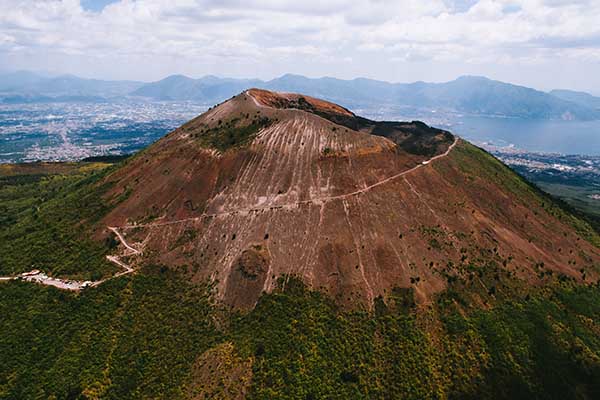
More eruptions of Mount Vesuvius
Roman cities such as Pompeii and Herculaneum were thus wiped out in the year 79 AD, but also in the centuries that followed, the volcano erupted several times, until the year 1631. After that year activity was still measured with small eruptions, but not very explosive anymore. The last minor eruption dates from 1944. Vesuvius is still active today and these activities are well measured.
Visit Vesuvius National Park
Mount Vesuvius National Park can now be visited and since 1995 it has the status of a national park. You will find hiking trails around and on top of the volcano to experience the special volcanic landscape. It is even possible to walk around the crater. Once you have reached the crater mouth after a tough uphill walk, you will occasionally see some smoke coming out of the crater, but no more than that. In addition, you also have a beautiful view of the city of Naples. Don't forget to book your Vesuvio tickets online.
Tip : Because visiting Mount Vesuvius is a logistical challenge, many visitors choose to book an organized day trip from Naples , whether or not combined with Pompeii or Herculaneum. Providers for Pompeii and Vesuvius tours with good reviews:
Video: What if the volcano would explode?
Where is mount vesuvius in italy.
FAQ Visiting Mount Vesuvius in Italy
By car you van drive up to 1 kilometer from the ticket office. From here you can take a strenuous walk towards the crater mouth of Vesuvius, where you will have a magnificent view of the area. You can also book organized bus excursions from Naples. More info about visiting Mount Vesuvius .
Pompeii allows a limited number of visitors per hour, so it may be useful to reserve your tickets online. However, most visitors opt for a guided tour, as this is the way to get to know the story behind the archaeological excavations of Pompeii. In this article you can read all about booking Pompeii tickets and tours .
The main attractions around Naples are the archaeological areas of Pompeii and Herculaneum, which became famous due to the eruption of the adjacent Vesusvius volcano. In the city of Naples itself, the beautiful family chapel Cappella Sansevero, the underground Naples of Napoli Sotterranea, the catacombs of San Gennaro and the archaeological museum are the most visited sights. In this article you can read all about the Top 25 Naples sights .

Most visited attractions
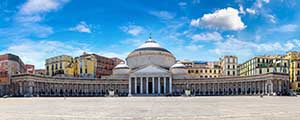
Top 25 Things to do in Naples
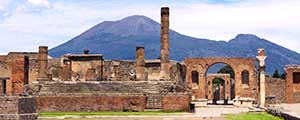
Pompeii: Tours & Tickets
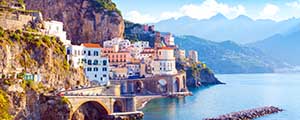
Day trips from Naples
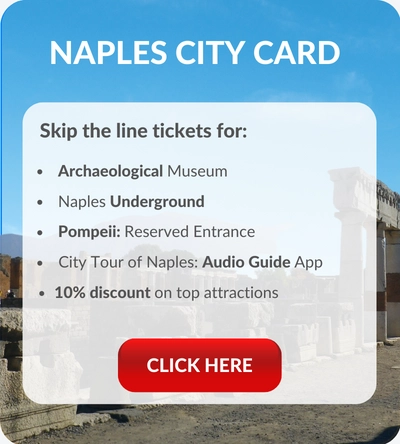

15 Best Mount Vesuvius Tours from Naples, Pompeii, and Amalfi Coast [2024]
By: Author Stefania Guglielmi
Posted on Last updated: February 9, 2024
Categories Europe , Italy
Discover all the incredible Mount Vesuvius tours that will allow you to climb up the infamous volcano and enjoy the views from its crater. Some even include a visit to Pompeii, the city it buried in the first century!
Mount Vesuvius, located near the Gulf of Naples, is a stunning natural wonder that has long fascinated travelers from around the world.
This active volcano is infamous for its eruption in AD 79 , which destroyed the ancient cities of Pompeii and Herculaneum. Today, visitors can explore the volcano and its surroundings with a variety of tours.
There are many Mount Vesuvius tours to choose from. Each offers a unique perspective on this iconic landmark. From hiking to wine tasting, these tours allow you to explore the volcano and its surroundings in a way that suits your interests.
Many of them combine a visit to Mount Vesuvius with Pompeii – which personally, I highly recommend you visit! Such a unique and staggering place.

In this post, we’ll highlight the best 15 Mount Vesuvius tours departing from various locations. You can easily take a tour from Naples, Pompeii, Sorrento, the Amalfi Coast, or even Rome.
Whether you’re interested in history, culture, or outdoor adventure, these tours are sure to satisfy your wanderlust and leave you with unforgettable memories.
I use and recommend Viator and Get Your Guide to book tours around the world, especially because of their cancelation policy. If for any reason your travel plans change, you can cancel most activities up to 24 hours and still get a full refund.
The 4 Best Mount Vesuvius Tours From Naples
➤ Take a break from the chaos of Naples and ascend to new heights on a Day Trip to Mount Vesuvius from Naples. Learn about the geological wonders of the volcano while you hike to the lip of the crater.
Your volcanological and alpine guide will give you the scoop on the volcano and the formation of the surrounding mountains. Keep an eye out for furry friends like deer, eagles, and foxes!
📝 This tour includes : Entrance fees, an alpine guide, and transportation. ➥ BOOK IT HERE
➤ Embark on an exhilarating expedition to relive the haunting past of Mount Vesuvius and Pompeii on this unforgettable Pompeii Ruins and Mt. Vesuvius Day Tour . Explore the ruins of the famous city with a licensed guide and hear tales of the fateful day when the volcano erupted, leaving the city frozen in time for 2,000 years.
Take a break by savoring a local pizza lunch. Then, head to the smoking mountain’s summit for panoramic views of the Bay of Naples. Afterward, head back to your hotel or cruise ship.
📝 This tour includes : Hotel pick-up and drop-off, entry tickets, lunch with a drink, and a guide. ➥ BOOK IT HERE
➤ Set out on an unforgettable journey to uncover the secrets of the oldest wine in the world on this Mount Vesuvius Wine Tour . Leave the chaos of Naples behind as you head to a stunning vineyard nestled on the slopes of the majestic Mount Vesuvius, Campania Ars Vinearia. Here you’ll learn about the unique characteristics of the region.
Explore the vineyards and relax over a delicious Mediterranean lunch paired with multiple local wines. Before going back, buy your favorite bottle from their farm store.
📝 This tour includes : Roundtrip transportation, a guide, lunch, and wine tasting. ➥ BOOK IT HERE
➤ Discover the wonders of the infamous volcano and its main victim on a Private Full-Day Tour to Pompeii and Mt. Vesuvius . First, explore the archaeological ruins of Pompeii. Then, you’ll walk through the crater area of the volcano for a breathtaking view of the bay of Naples.
End the day at a winery for a tasting of local cuisine and wines. This eight-hour journey offers the opportunity to immerse yourself in history and natural beauty. Hotel or port pickup and drop-off are included. Note: Entrance fees are not included.

📝 This tour includes : Hotel pick-up and drop-off, a winery visit, and a guide. ➥ BOOK IT HERE
The 3 Best Mount Vesuvius Tours From Pompeii
➤ This Mt Vesuvius Tour from Pompeii includes round-trip transportation from the city, and fast-track entrance tickets to Mt. Vesuvius park. Hike the trail to the crater’s edge with your guide and snap some Insta-worthy shots of the Bay of Naples. Get insights into the volcano’s history and geology while enjoying the bird’s-eye view.

📝 This tour to Mount Vesuvius from Pompeii includes : Transfers and skip-the-line tickets. ➥ BOOK IT HERE
➤ Want to explore ancient ruins, sip on wine, and gallop on horseback through a national park? Look no further than this exclusive Pompeii and Mount Vesuvius Tour !
It combines a guided tour of Pompeii with a horseback ride and wine-tasting lunch on Mount Vesuvius. Learn about Roman history, admire breathtaking views, and satisfy your taste buds all in one day. Plus, you’ll have a licensed guide to help you uncover all the hidden secrets of the ruins.

📝 This tour includes : Guided tour in Pompeii, 1-hour horse ride, lunch, and wine tasting. ➥ BOOK IT HERE
➤ Join this Pompeii and Mount Vesuvius Tour to experience an epic day. With skip-the-line entry and a two-hour guided tour of Pompeii, you’ll witness the highlights of this ancient city in no time. With an expert archaeologist guide, delve deeper into the complex ruins of Pompeii and unlock the secrets of this ancient city.
Then, hop in a private minivan and head straight to the Mount Vesuvius crater trail. You’ll hike up to the volcano peak overlooking the Bay of Naples.

📝 This tour includes : ➥ BOOK IT HERE
The 4 Best Mount Vesuvius Tours From Sorrento
➤ Discover the awe-inspiring ruins of Pompeii and witness the stunning views from Mount Vesuvius’ summit on a Full-Day Pompeii and Vesuvius Tour from Sorrento. With skip-the-line entry, explore the ancient city’s multiple ruins, frescoes, and even plaster casts of its inhabitants.
Then, stand on the edge of Vesuvius’ crater and bask in the beauty of the Bay of Naples. Learn about the volcano’s turbulent history from an official alpine guide. Conclude the adventure with a transfer back to Sorrento.
📝 This tour includes : Transfers to Pompeii and Mount Vesuvius from Sorrento, entrance fees, and guided tours of the sites. ➥ BOOK IT HERE
➤ On this Day Trip to Mt. Vesuvius , walk on the edge of the crater and snap pics of the stunning Bay of Naples. Then, discover the secrets of winemaking at a local winery. Here you’ll indulge in a delicious lunch with 3 wines straight from the farm’s cellar.
Plus, no need to worry about transportation – roundtrip travel from Sorrento is included. Get ready for an unforgettable experience that will leave your taste buds and senses fully satisfied.
📝 This tour includes : Transportation, lunch, wine tasting, and entrance fees. ➥ BOOK IT HERE
➤ Join this Pompeii and Vesuvius Tour to uncover the secrets of these fascinating locations. Enjoy a scenic boat ride, a dip in crystal clear waters, and a walk through the living ruins of Pompeii with a licensed guide.
Then, witness the breathtaking view from the crater of Mount Vesuvius. Finally, stop at a traditional vineyard for lunch and wine tasting before a scenic sailing trip along the coast.
📝 This tour includes : Entrance fees to both Pompeii and Vesuvius, transfers, a guide, lunch and wine tasting. ➥ BOOK IT HERE
➤ Experience the best of Vesuvius’ history on this private Pompeii, Herculaneum, and Mount Vesuvius Tour that includes a stop at a family-run winery in Vesuvius National Park for wine tasting. Avoid the crowds and ticket lines with an expert archeologist guide who will lead you through the impressive sites. Visit ancient houses, bathhouses, shops, and taverns.
Stop for an incredible lunch with wine tasting. Then, admire the stunning views of the volcano and the Bay of Naples. If you are traveling with children, you can upgrade “family-friendly” experience designed to entertain kids.

📝 This tour includes : Transfers, bottled water, and a private guided tour of both archaeological sites. ➥ BOOK IT HERE
The Best Mount Vesuvius Tours From Positano
➤ Climb a volcano, explore ancient ruins, and soak in stunning views all in this Pompeii and Vesuvius Full-Day Tour from the Amalfi Coast! Check out the preserved excavation site of Pompeii and learn about Roman city life.
Then, hop on a minibus to the summit of Mount Vesuvius and witness breathtaking views of the Campania region. Sit back, relax, and let the professional guide take care of the logistics. You get to enjoy the stunning sights and skip long lines with included entrance tickets.
📝 This tour includes : Transfers, an English-speaking guide, and a tour with live commentary on both attractions, besides the entrance fees. ➥ BOOK IT HERE
➤ Discover the captivating ruins of Pompeii and witness the magnificence of the infamous volcano on a Full-Day Pompeii and Mount Vesuvius Guided Tour . Don’t worry about the hassle of transportation. You’ll be picked up in a comfortable, climate-controlled minibus for a VIP experience.
Learn fascinating details about the mysterious ancient town preserved by volcanic ash for nearly two thousand years. Then take a stroll to the infamous volcanic crater of Mount Vesuvius for a first-hand peek and bask in the panoramic view of the Bay of Naples.

📝 This tour includes : Roundtrip transportation from Positano, skip-the-line tickets for both attractions, and a 2-hour guided tour of Pompeii. ➥ BOOK IT HERE
The Best Mount Vesuvius Tour from Amalfi
Ready for an adventure? Hop on a deluxe coach on this Pompeii & Mt Vesuvius Trip from Amalfi. Your English-speaking guide will lead you through the ancient ruins of Pompeii and to the summit of the infamous volcano.
Enjoy stunning views of the Amalfi Coast along the way. Don’t miss out on this 8-hour adventure!

📝 This tour includes : Transfers, live commentary from your guide, and skip-the-line tickets. ➥ BOOK IT HERE
The Best Mount Vesuvius Tour From Rome
Unleash your inner archaeologist and witness the intact remains of the famous archaeological site with a Guided Tour of Pompeii . Avoid long lines and bask in the comfort of an air-conditioned bus as you travel from Rome.
After exploring the ruins, you’ll take a hike up Mount Vesuvius for panoramic views of the Bay of Naples and Amalfi Coast. Please note that in the winter months, the climb to Mount Vesuvius is replaced by a tour through the historic city of Naples.
📝 This tour includes : Transfers from Rome, a guide, and skip-the-line tickets. ➥ BOOK IT HERE
Mount Vesuvius Tours FAQs
You don’t need one, but it’s quite the logistical challenge to plan the trip, so you might be more comfortable joining a tour.
In my opinion, these below are the best options: • Mount Vesuvius Day Trip • Pompeii Ruins and Mount Vesuvius Tour • Mount Vesuvius Wine Tour • Private Mount Vesuvius, Pompeii, and Winery Tour
You can definitely visit Mount Vesuvius from Rome on a tour.
Mount Vesuvius is a very interesting visit, and it’s worth your time if you’re interested in history, geology, or simply enjoy hiking. The views from up there are fantastic, the history of Vesuvius is amazing, and how cool is it to say you’ve been on top of the most famous volcano in the world?
You can not only visit Mount Vesuvius, but hike up to its crater and enjoy the views of the bay while standing on its rim.
Stefania Guglielmi is the founder of Every Steph. Originally from Bologna, Italy, she's been traveling full-time since 2016 and has visited over 50 countries across 6 continents. She believes sustainable travel and luxury travel can go hand in hand and has been advocating for responsible tourism since 2014. Stefania's advice and travel experiences have been featured in important publications such as Business Insider, Refinery29, and Yahoo Money.
Sign me up for the monthly newsletter!

How to Visit Mt Vesuvius: by Car, Bus & Tours (+Useful Info & Tips)
By Author Jurga
Posted on Last updated: February 2, 2024
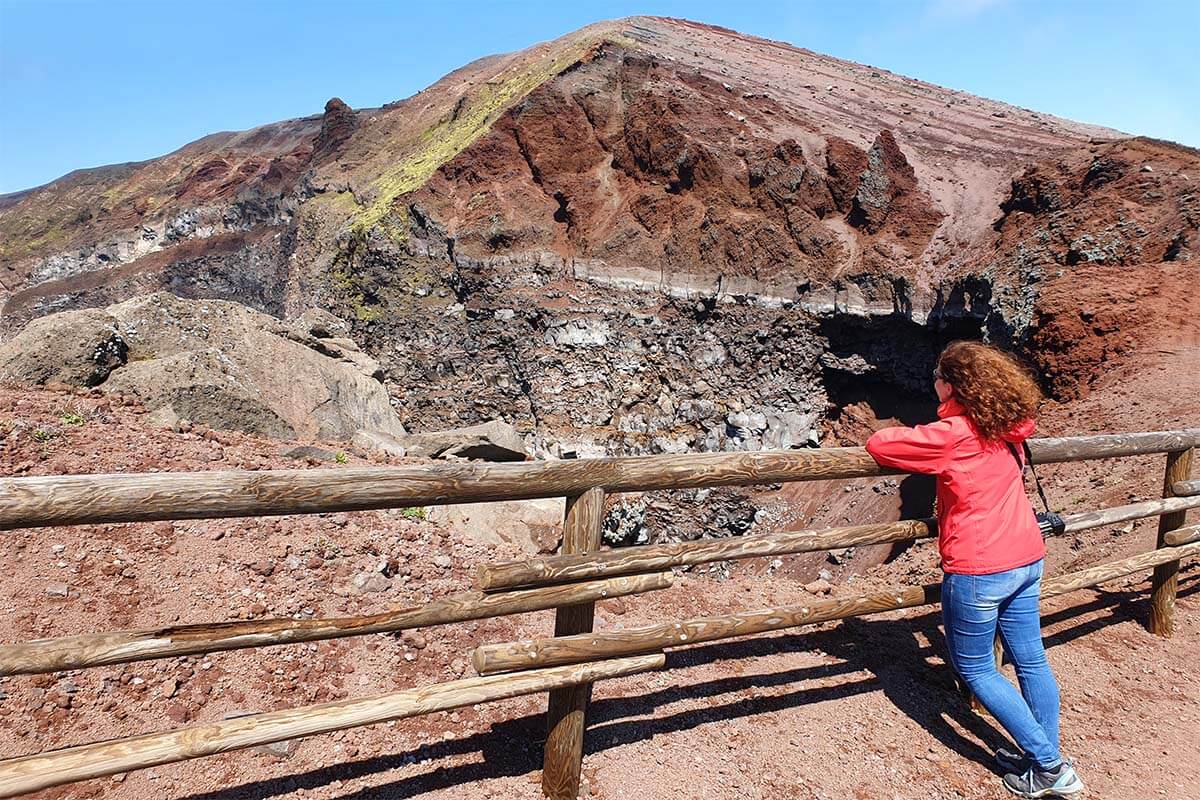
Mount Vesuvius volcano is one of the most iconic natural landmarks in southern Italy. Whether you are traveling to Naples , Sorrento, or the Amalfi Coast , a visit to Vesuvius is really a must. But how to get to Mt Vesuvius and what to expect?
In this guide, we share all the best ways to get to the Vesuvius crater – by car, bus, and organized tours. In addition, we include all the practical information and useful tips for your visit.
Whether you are looking for the best tour to Vesuvius from Naples or Sorrento, want to take a bus to Vesuvius from Pompeii or Ercolano, or rather visit the volcano on your own, this guide should answer all your questions and help you plan a fun, memorable visit. Find out!
TIP: If you have no time to read the entire guide and find the planning overwhelming, this bus + ticket combo from Ercolano is the cheapest way to visit Mt Vesuvius. If you don’t want to worry about transport and see more in a day, this is one of the best day tours that visit Vesuvius volcano as well as the Pompeii archeological site from Naples or Sorrento .
This tour is one of the best-rated options for those looking to visit Mount Vesuvius from Amalfi Coast . Further below, you can find more details about all the available bus transfers and tours .
READ ALSO: Best Day Trips from Naples
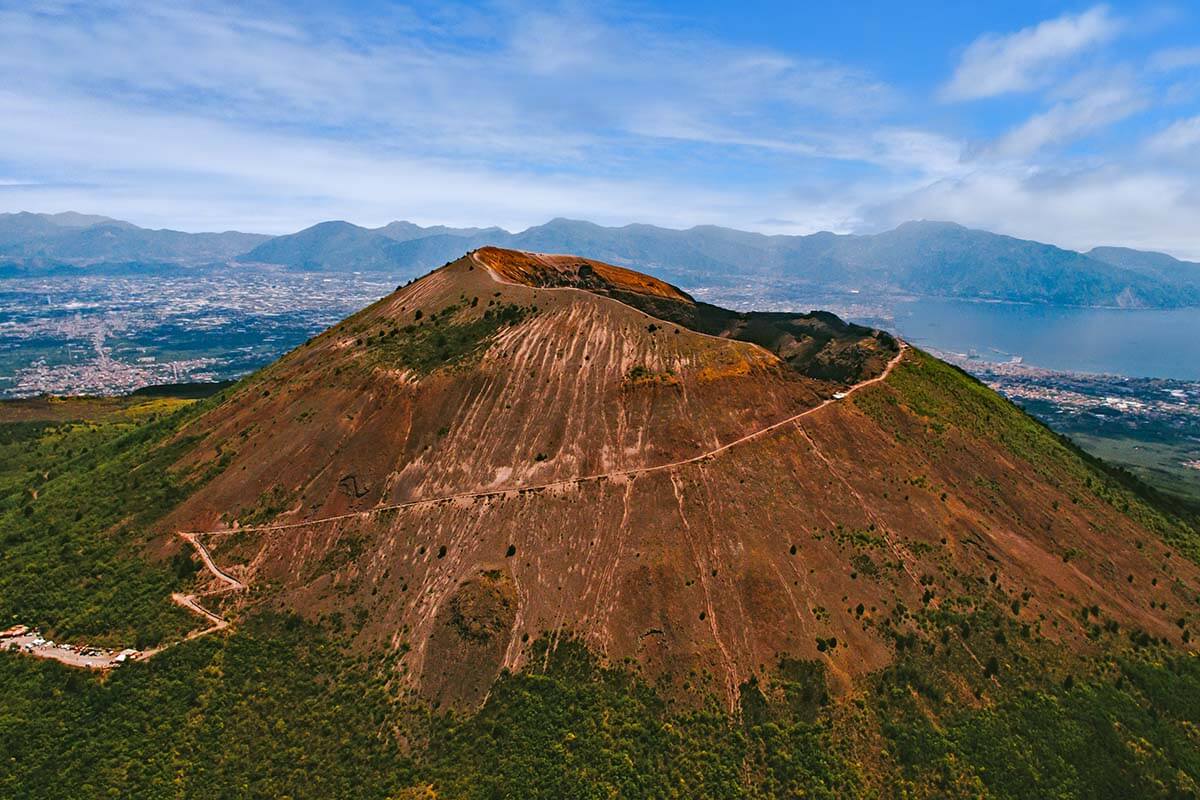
Visiting Mt Vesuvius – OVERVIEW:
- Location & map
- What to see & do
- Great Cono hiking trail
- How much time do you need
- Opening hours
- How to visit by car (+ parking info)
- How to visit by bus
- Visiting with kids
- Useful tips
Where is Mount Vesuvius + Map
Mt Vesuvius is located near the city of Naples in southern Italy. The nearest town is Ercolano , from where it’s just 13 km to the top of Mt Vesuvius (about 30 minutes drive). The official entrance to the Vesuvius site is at Piazzale di Quota 1000, Ercolano .
The driving distance from Naples or from Pompeii to the top of Mt Vesuvius is about 23-25 km and the drive takes about 40 minutes.
Below, you can see the map indicating driving times and distances to Mt Vesuvius. Here you can see the exact location of the parking and the entrance to the volcano site.
How to use this map: Use your computer mouse (or fingers) to zoom in or out. Click on the icons to get more information about each place. Click the arrow on the top left corner for the index. Click the star next to the map’s title to add it to your Google Maps account. To view the saved map on your smartphone or PC, open Google Maps, click the menu and go to ‘Your Places’/’Maps’. If you want to print the map or see it in a bigger window, click on ‘View larger map’ in the top right corner.
What to see and do at Mount Vesuvius
Mt Vesuvius is one of the largest volcanos in Italy and the only recently active volcano on the European mainland. Its last eruption dates from 1944 , and it wasn’t nearly as bad as the one in 79 AD which was responsible for the destruction of Pompeii and Herculaneum.
Nowadays, Mount Vesuvius and the area around it is a protected national park. You can get very close to the crater and it’s a really impressive sight! You’ll quickly realize why this is one of the most popular places to see in southern Italy.
Visiting Mt Vesuvius involves a short climb from the entrance to the crater rim , which takes about 10 minutes. Once you reach the top, you can follow a wide path on the southern rim of the crater. This is an easy hiking trail that has some flat sections, but also a few stairs.
All in all, the climb and the hike aren’t too strenuous, but it sure helps to wear closed shoes with a good grip.
There are various lookout points along the caldera where you can get quite close to the crater and get a good look inside. The colors here are so vivid, and often, you can also see some steam coming out from the depths of the volcano. On the other side, you have far views of the Bay of Naples .
TIP: If you are looking for more things to do near Mt Vesuvius, you may want to consider visiting some wineries nearby. Some tours (see here ) also include a lunch stop at the vineyards on the slopes of the volcano.

The Great Cono hiking trail
The hiking trail around Mount Vesuvius crater – the Great Cono – is indicated on local maps as nature trail n.5 “Il Gran Cono”. It’s a 4 km (2.5 mi) loop hike that takes about 3 hours.
In the past, it was possible to hike the entire perimeter of the crater. However, a big part of that trail has been closed for quite a while now. For some reason, they still have the signs showing the entire loop hike at the entrance of Mt Vesuvio National Park, but locals told us that it’s not at all clear if or when it will reopen.
At the moment, you can only do part of this trail – from the entrance at Piazzale di Quota 1000 along the south side of the caldera and back the same way. But no need to worry that you are missing anything – the scenery is impressive and you get a good view of the volcano crater.
Either way, the entire loop hike around the Vesuvius crater rim would take over 3 hours. So even if the trail would be open, you could only do it if you are visiting Mt Vesuvius with your own car since most tours foresee only an hour at the top (more info below).
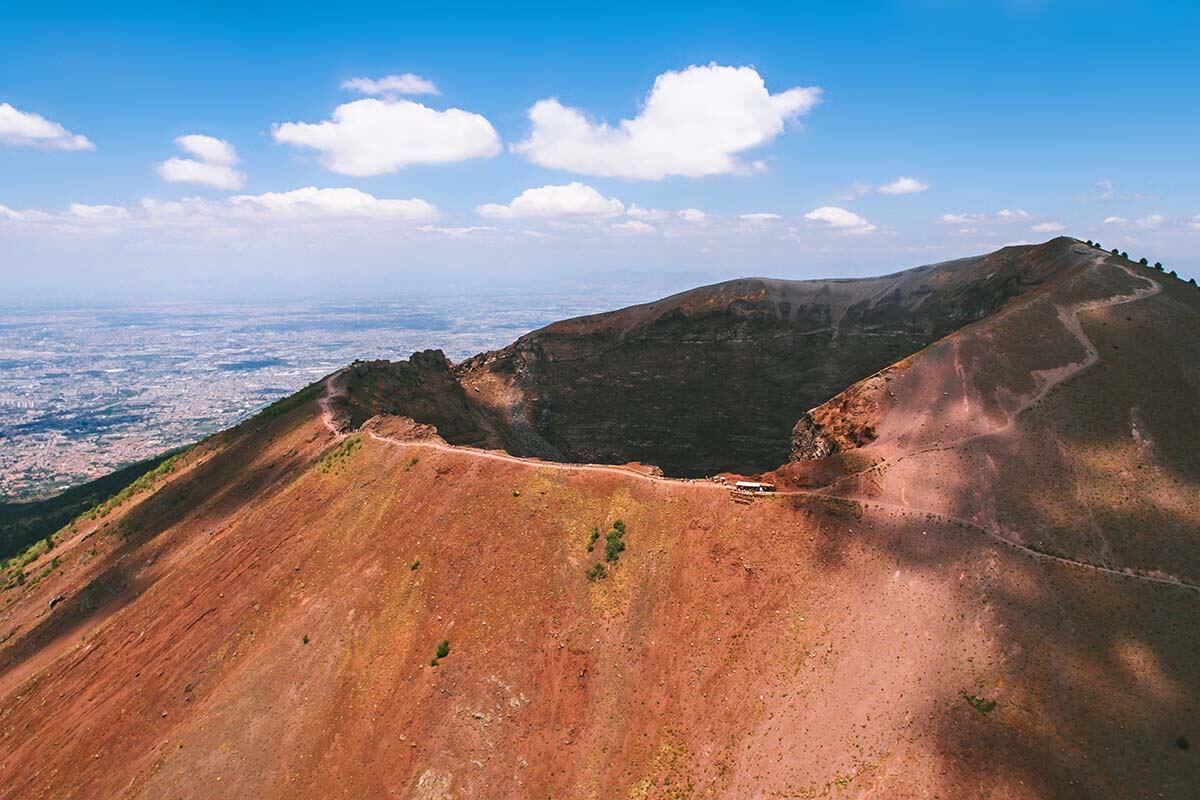
Facilities at Mt Vesuvius
There aren’t many facilities at Mount Vesuvius. There is a small ‘ shop ‘ at the entrance where you can buy souvenirs. They also sell sandwiches, drinks, and ice cream.
You’ll also see a few kiosks at the top next to the crater rim where you can get some souvenirs or get a drink . We saw several groups tasting limoncello here.
You’ll also find a few picnic tables at the top.
There are no public bathrooms at Mt Vesuvius.

How much time do you need to visit Mt Vesuvius
Not including the travel time, you need about 1 hour to visit Mt Vesuvius from the moment you enter the site. This gives you sufficient time to walk to the top and explore all the viewpoints along the crater rim, but without lingering around too much.
If you want to take it easy, hike all the way to the last accessible viewpoint (and back), count about 1.5 hours for a visit. This would give you plenty of time for photo stops and maybe even a quick drink at one of the shops at the top.
If you also add the travel time, you need about 3-4 hours to visit Mt Vesuvius. This will depend on where you are coming from – Naples, Ercolano, or Pompeii, and how you travel – by car, bus, or with a tour.
If you opt for a Mount Vesuvius tour that also includes a visit to Pompeii or Herculaneum, you should count about 8 hours for a visit.
TIP: If you visit Mt Vesuvius by car, you can also stop for lunch/ wine tasting at one of the vineyards on the slopes of the volcano ( see here ). This would add 1.5-2 hours to your visit. However, it’s best to do any wine-tasting tours with a guided tour, so that no one has to drive and you can actually enjoy the wine. There are quite a few Mt Vesuvius tours that also include a visit to one of the vineyards (see here ). Depending on what else your tour visits, it can take anywhere from 4 to 8 hours.

When is Mt Vesuvius open
Mt Vesuvius crater can be visited daily the whole year round. At the moment of the last update, the opening hours are as follows:
- January – February: 9 am – 3 pm.
- March: 9 am – 4 pm.
- April, May & June: 9 am – 5 pm.
- July – August: 9 am – 6 pm.
- September: 9 am – 5 pm.
- October: 9 am – 4 pm.
- November – December: 9 am – 3 pm.
Good to know: The ‘closing’ times are actually the last scheduled entry times. You have to exit no later than 1 hour after the official closing time. So for example in summer, you can enter at no later than 6 pm and stay until 7 pm.
Mt Vesuvius Tickets
Unless you are visiting Mt Vesuvius with a guided tour or opt for this bus + ticket option from Ercolano or from Pompeii , you will need to reserve a ticket in order to enter the site around the volcano crater. They work with timed entrance tickets and you can only book them online .
Luckily, the rules when you can actually enter have recently been loosened. You can now enter the site 30 minutes before and up to 90 minutes after your scheduled time (so, for example, if you book a ticket for 10 am, you can enter anywhere between 9.30 am and 11.30 am). But be sure to check the official site in case anything changes again!
You can reserve Mt Vesuvius entrance tickets on the official website . The tickets often sell out for specific time spots, especially in the afternoon, so if your schedule isn’t flexible, it’s best to book at least a few days in advance.
Good to know: You have to reserve Mt Vesuvius tickets online in advance – there is no ticket office at the top. And there is also no Internet connection here. If you didn’t book upfront, the best way to visit is by an organized tour since they seem to have access to a separate booking system.
When driving to the top, we saw some signs at the local restaurants advertising Mt Vesuvius tickets. So it might be possible to get them last-minute as well. But if you want to pay a fair price and not have to stress about it, it’s best to simply book your tickets online in advance.
PRO TIP: When you book your tickets online, print them out. If you don’t have access to a printer, be sure to take screenshots of every single ticket. Since the Internet doesn’t work at the entrance, you won’t be able to retrieve your online booking on the phone.
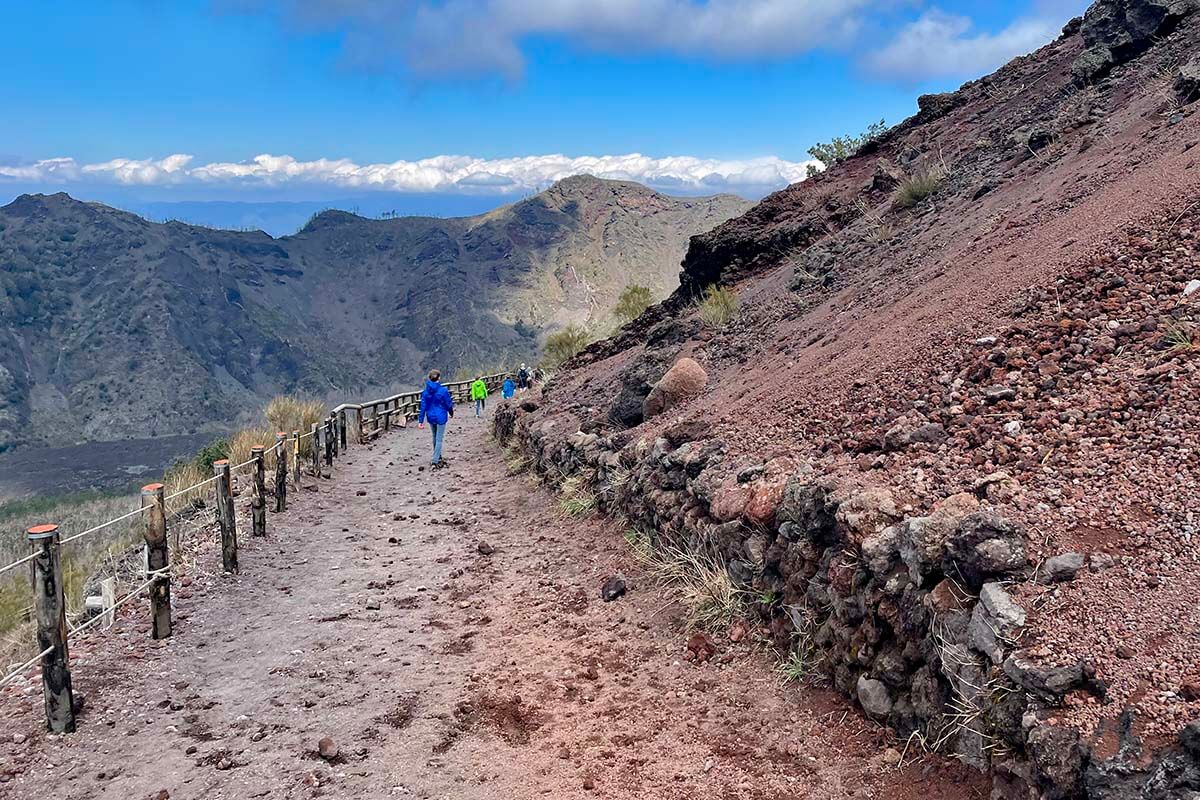
Visiting Mt Vesuvius by Car & Parking Info
If you have a car, the easiest way to visit Mount Vesuvius is by simply driving there. The road is rather narrow and winding, but it’s not too bad. However, you can expect to meet lots of big tour buses along this narrow road, so be prepared for some stressful driving. The views along the way are quite nice, but if you want to enjoy them, it’s best to stop at the parking areas of a few restaurants on the way to the top.
However, visiting Vesuvius by car is not as straightforward as it looks. And it becomes even more complicated if you are planning on driving here with a rental car.
This is because parking at the top is very limited . In fact, you cannot park your car at the very top where the entrance to the crater site is. This is a drop-off zone for tour buses and shuttles, and no parking for private vehicles is allowed here. So you’ll have to park at a dedicated car park further down the mountain – see below for more information.
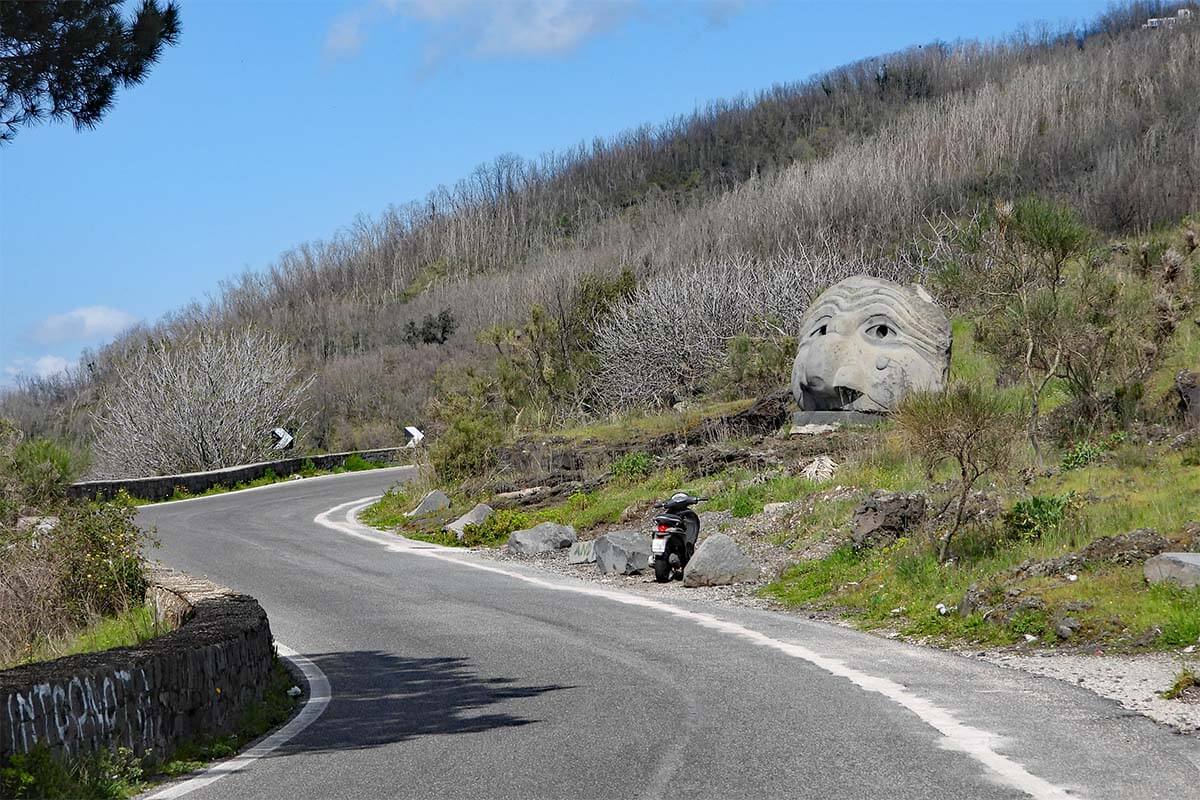
Parking at Mt Vesuvius
There’s a dedicated roadside parking about 2km down the road before you get to the volcano crater . However, parking space here is also limited and you have to reserve in advance. Furthermore, once you park your car here, remember that you will have to make your way to the top (more about it further below).
Good to know: There is no way to pay for parking at the top. In fact, the situation is similar to the Mt Vesuvius tickets. There is no Internet connection and so you cannot just drive there hoping to book a spot upon arrival. And they do check! So you really have to book everything in advance and print or screenshot all your bookings.
It is essential to book your Vesuvius parking in advance and you have to do it on this website .
This is where it becomes interesting. First, you have to create an account, which is rather easy. But then, in order to reserve a spot, you have to provide the license plate of your car. So if you are renting a car and don’t have this information, you won’t be able to reserve parking at Mt Vesuvius until you actually have a car. And by then, the timed slots for the volcano visit and/or parking might be fully booked. This shouldn’t be an issue if you have at least a few days before your visit.
If you succeed in securing your reservations for the parking and the Mt Vesuvius visit at around the same time, you’re good to go. Except when you arrive at the parking, you realize that nobody respects the parking spots allocated by the booking system. So your reserved parking place will likely be taken by someone else.
Just ignore this and park at any of the free spots – it’s what everyone does, and we did it too. The only thing that really matters is that you have a reservation and can prove that you have paid for parking.
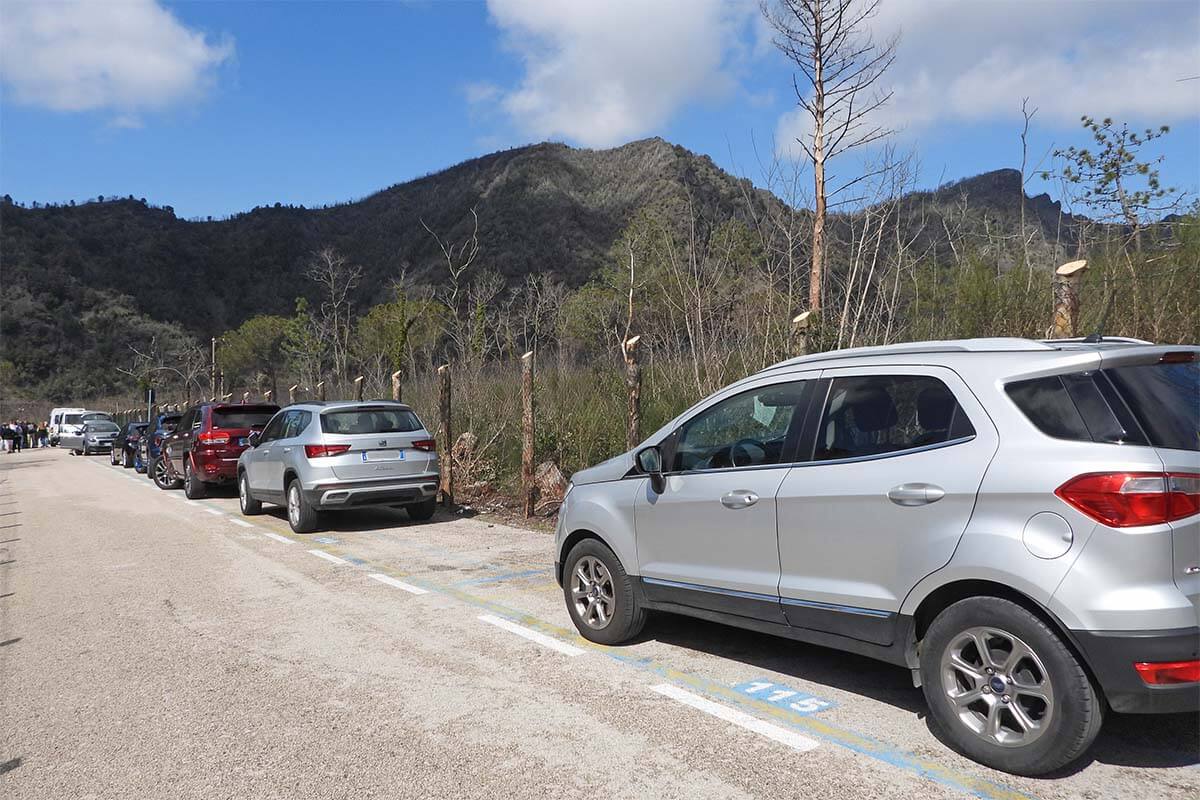
Getting from the parking to the volcano crater
After parking your car, you still have to get to the top where the entrance of Mt Vesuvius crater site is located. As already mentioned, the entrance is located about 2 km (1.25 mi) uphill from the parking.
While you can walk to the top, I really do not recommend it. It’s a long uphill walk of about half an hour one way. You have to walk on the main road which is also used by tour buses passing by all the time. And the scenery is not really spectacular enough to justify it.
Instead, you can pay a few euros extra and take a shuttle bus from the parking to Mt Vesuvius (and back). When you come back after your visit, you can just hop on the shuttle bus that will take you back down to the car parking.
Good to know: There was a big wildfire at Mt Vesuvius in 2017 (nothing to do with the volcano itself). It destroyed lots of trees and other vegetation on the slopes of the volcano. So the scenery along the road to the top now looks quite barren.
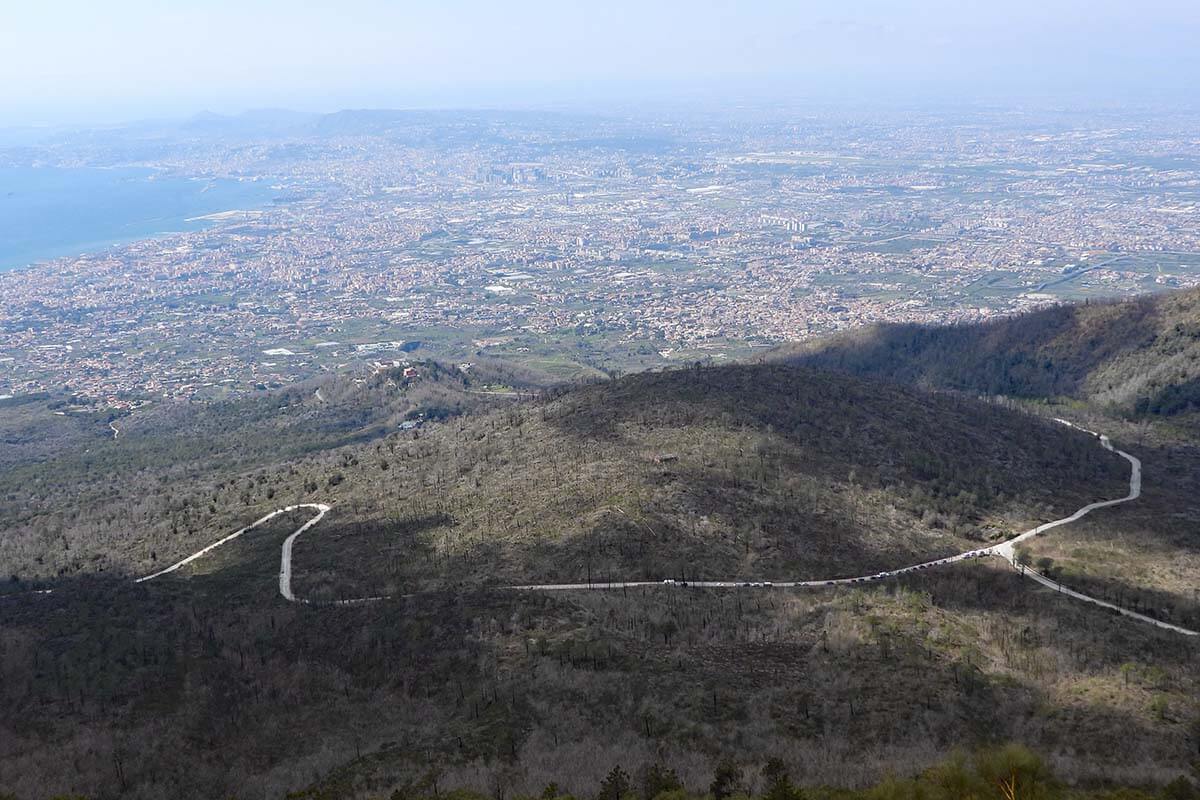
How to Get to Mt Vesuvius by Bus
It’s also possible to get to Mt Vesuvius by bus. However, this is not public transport, but shuttle buses that are organized by private companies.
Because there are regular shuttle transfers, it is easily possible to combine a visit to Herculaneum with that of Mt Vesuvius or Pompeii and Mt Vesuvius on the same day .
So even if you don’t have a car, you can take a train to either Pompeii or Herculaneum, visit the archeological site, have lunch, and then take a shuttle bus to Vesuvius Volcano. Or – depending on the available departure times – you can visit Mt Vesuvius first and the archeological site later on the same day. See below for more information about buses from various starting points.
Bus from Ercolano to Mt Vesuvius
The closest place from where you can take a bus to Vesuvius Volcano is Ercolano (known for the archeological site of Herculaneum). Buses depart from Ercolano Scavi railway station every 40 minutes starting from 9.30 am. The driver will instruct you on when to be back at the bus, but generally, they give you more than sufficient time to explore the volcano site.
You can book a bus ticket for Vesuvio Express in advance. However, keep in mind that this ticket is just for transportation, so you still need to book the Mt Vesuvius ticket as well. Instead, it’s better to just get this bus transfer that already includes a Vesuvius ticket .
Even people who have a car sometimes decide to take this bus to Vesuvius since parking in Ercolano is easier (and if you visit Herculaneum anyway, you can just leave your car at the car parking there until you are back).

Bus from Naples to Vesuvius
It is also possible to visit Mt Vesuvius from Naples by bus . Buses depart from Piazza Garibaldi in Naples (central station) and you can book a ticket here . These buses give you about 2 hours of free time at the top of the volcano.
Note that this is just a bus ride, so it also doesn’t include Mt Vesuvius tickets! If you are looking for an all-in option, you can book a tour. This 4-hour tour departs from Naples and includes transportation as well as entrance tickets to Mount Vesuvius.
Bus from Pompeii to Vesuvius
Another option is to take a bus from Pompeii to Mt Vesuvius. Also here, you have several options.
You can simply book a bus transfer that includes Vesusvius tickets . Or you can joing this small-group tour from Pompeii that includes a bus transfer, Mt Vesuvius tickets, and a guided tour.
Buses to Mount Vesuvius from Pompeii depart from the Scavi Porta Marina Superiore entrance, which is right next to the railway station as well.
Visiting Mt Vesuvius with a Tour
One of the easiest ways to visit the Vesuvius volcano is by joining an organized tour . The main advantage of coming with a tour is that you have nothing to worry about – driving, parking, or reserving the timed entrance tickets.
The main disadvantage of going with a tour is that – depending on the tour – your time at the top can be a bit more limited. However, most tours are usually well-organized giving you the right amount of time to walk along the crater and enjoy the best views.
Good to know: Since you don’t need that much time to visit the site of Mount Vesuvius, most tours that come here also include a visit to some other popular sites nearby. The most popular tours are those that start in Naples and combine Pompeii and Mt Vesuvius on the same tour, but there are other options as well. Below, you can see our hand-picked selection of the best Mt Vesuvius tours.

Best Mt Vesuvius Tours
There are so many tours that can bring you to Mount Vesuvius that it can be really overwhelming to figure out which one is best for you. Some tours bring you to a place but don’t include a visit inside, whereas some others include transport and tickets, but no guided visit, and there are tours that include everything.
Before you book, be sure to double-check detailed descriptions of what these tours actually include and pick one that best suits your interests.
Here are a few of the best-rated Mt Vesuvius tours from Naples:
- Mt Vesuvius only – includes bus transfer and tickets to Mt Vesuvius.
- Mt Vesuvius & wine tasting – the best-rated tour in its category.
- Mt Vesuvius & Pompeii – the best-value tour to these 2 popular sites.
- Mt Vesuvius & Herculaneum – includes Mt Vesuvius and Herculaneum visits.
- Mt Vesuvius, Pompeii & Herculaneum – this tour includes a guided visit to Pompeii and Herculaneum, also lunch and wine tasting, but it only drives up Mt Vesuvius without actually visiting the crater.
- All-in private tour – this is the only tour that I found that actually includes a visit to all 3 sites (Vesuvius, Herculaneum, and Pompeii). It’s also possible to book this tour from the Naples cruise terminal.
Here are the best-rated Mt Vesuvius tours from Sorrento:
- Mt Vesuvius, lunch & wine tasting .
Here is one of the best tours that visit Mt Vesuvius from Amalfi Coast:
- Mt Vesuvius & Pompeii .
Here is the best-rated Mt Vesuvius tour from Rome:
- Mt Vesuvius & Pompeii – this is the most popular day tour that visits Mt Vesuvius from Rome.
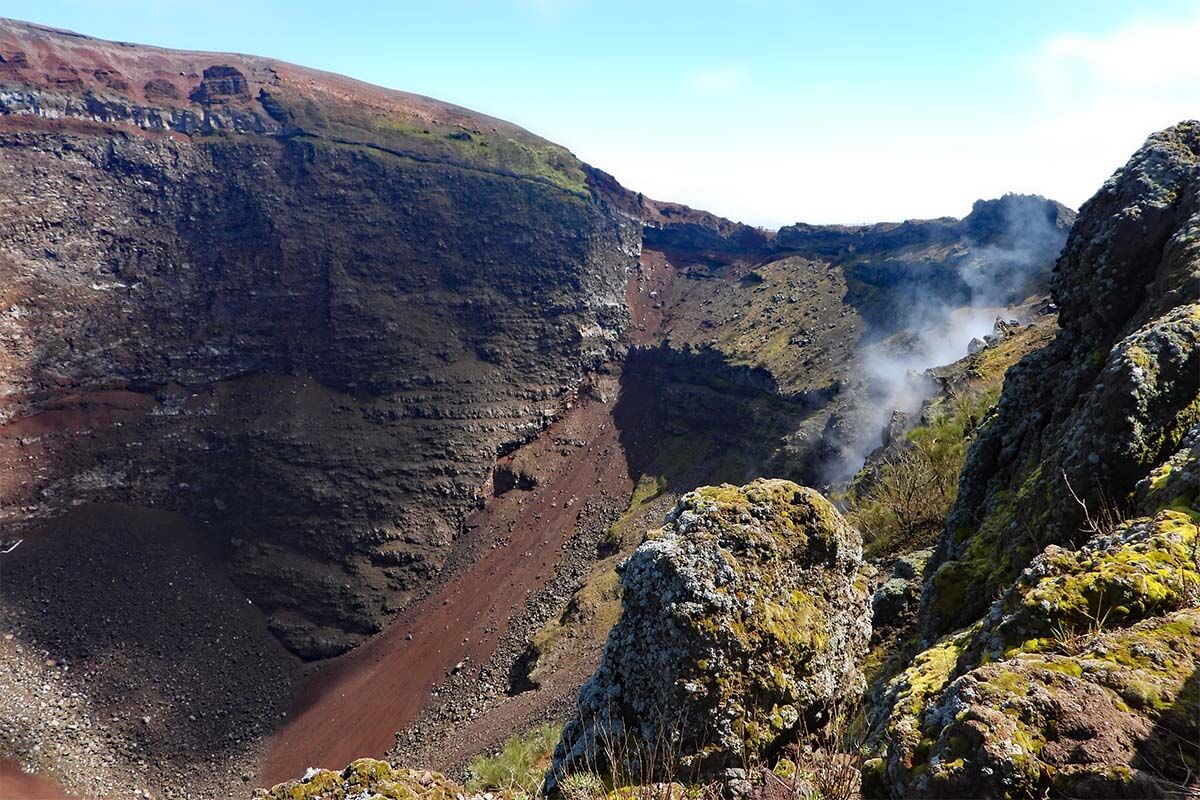
Visiting Mount Vesuvius with kids
If you wonder if you can visit Mt Vesuvius with kids, the answer is yes, of course. However, you should know that the trail is not accessible to strollers, and parts of the hike are a bit steep.
So your kids will have to walk, or – with babies and toddlers – you’ll have to carry them.
Visiting Vesuvius with children is not difficult, but you need some patience with the little ones and you’ll have to help them on the steeper parts of the trail and also on the stairs. Also, be sure that your children stay with you at all times because going off the official trail could be very dangerous!
All in all, I think that kids from about 4-5 years old should be able to do the walk next to the rim without too much help. The most challenging part is actually at the beginning – the 10-min uphill walk from the entrance to the crater rim. Once you reach the crater, the trail is more or less flat, with a few stairs here and there.
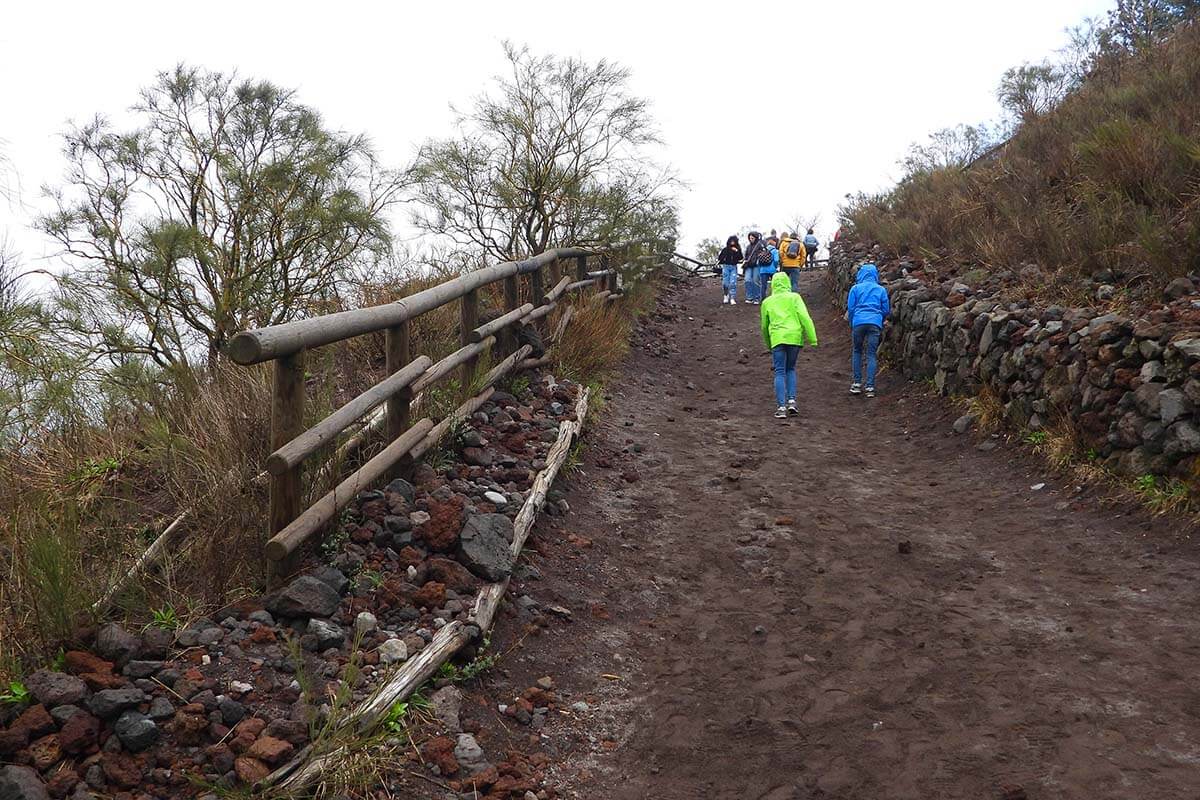
Tips for visiting Vesuvius Volcano
- Book in advance! The volcano site can only be visited with a timed-slot online reservation and the same counts for the parking. The lack of an Internet connection makes it impossible to book anything once you are already at the top.
- Be sure to use bathroom facilities before going to Vesuvius. At the moment, there are no public bathrooms at the top.
- There are a couple of souvenir stands at Mt Vesuvius. Some of them also sell drinks. But that’s pretty much it as far as facilities go.
- Bring some drinking water . If you are visiting Vesuvius with a tour, see if they include lunch. Otherwise, and depending on your overall itinerary, you may want to also pack some snacks .
- Wear comfortable closed shoes. When you visit the Mount Vesuvius crater site, you’ll have to do some uphill/downhill walking on a dirt track. Sensible shoes are a must.
- Take a jacket/ sweater with you as it can be quite cold and windy at the top. In spring, or in the fall, you’ll often need a jacket here, and in winter, you might also want to pack gloves and a warm hat. In summer, you’ll often be ok in shorts and T-shirts, but – depending on the weather – it might be smart to take a light sweater with you as well.
- If you can, try to plan a visit on a clear cloudless day, but don’t worry too much about the weather and just make the best of what you get. We couldn’t even see the volcano from a distance on the day of our visit. Yet, the crater itself was perfectly visible when we arrived at the top and we could even enjoy some nice views of the surroundings as the clouds were moving all the time.
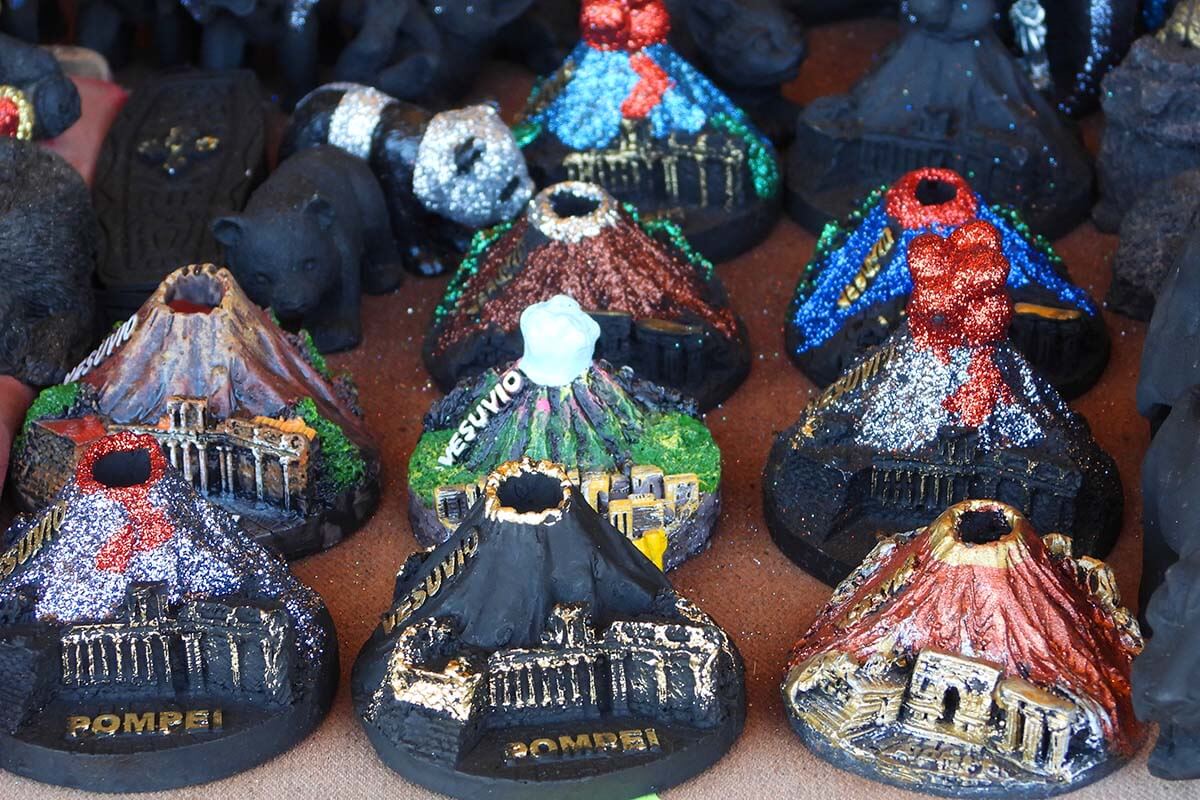
So, this is our guide to visiting Mount Vesuvius. I hope that it gives you a better idea of what to expect and helps you plan a nice visit!
If you are looking for more information about the Naples – Amalfi Coast area, be sure to check our other guides to this part of Italy – see below!
More travel inspiration for Naples, the Amalfi Coast, and Capri
- Best things to do in Naples (all the musts + map)
- Where to stay in Naples (best areas)
- One day in Naples (detailed itinerary)
- Best day trips & tours from Naples (top sights for first-time visitors)
- Naples to Amalfi Coast (all transport options explained)
- Amalfi Coast itinerary
- Tips & Tricks for First Visit to Amalfi Coast
- Where to stay on the Amalfi Coast
- Amalfi Coast vs. Cinque Terre
- Hiking the Path of the Gods
- Best things to do in Capri
- Best things to do in Anacapri
- Where to stay in Capri
- Capri from Sorrento (travel info + 1-day itinerary)
READ ALSO: Naples, Amalfi Coast, Capri Itinerary for 10 Days
If you found this post useful, don’t forget to bookmark it and share it with your friends. Are you on Pinterest? Pin this image!
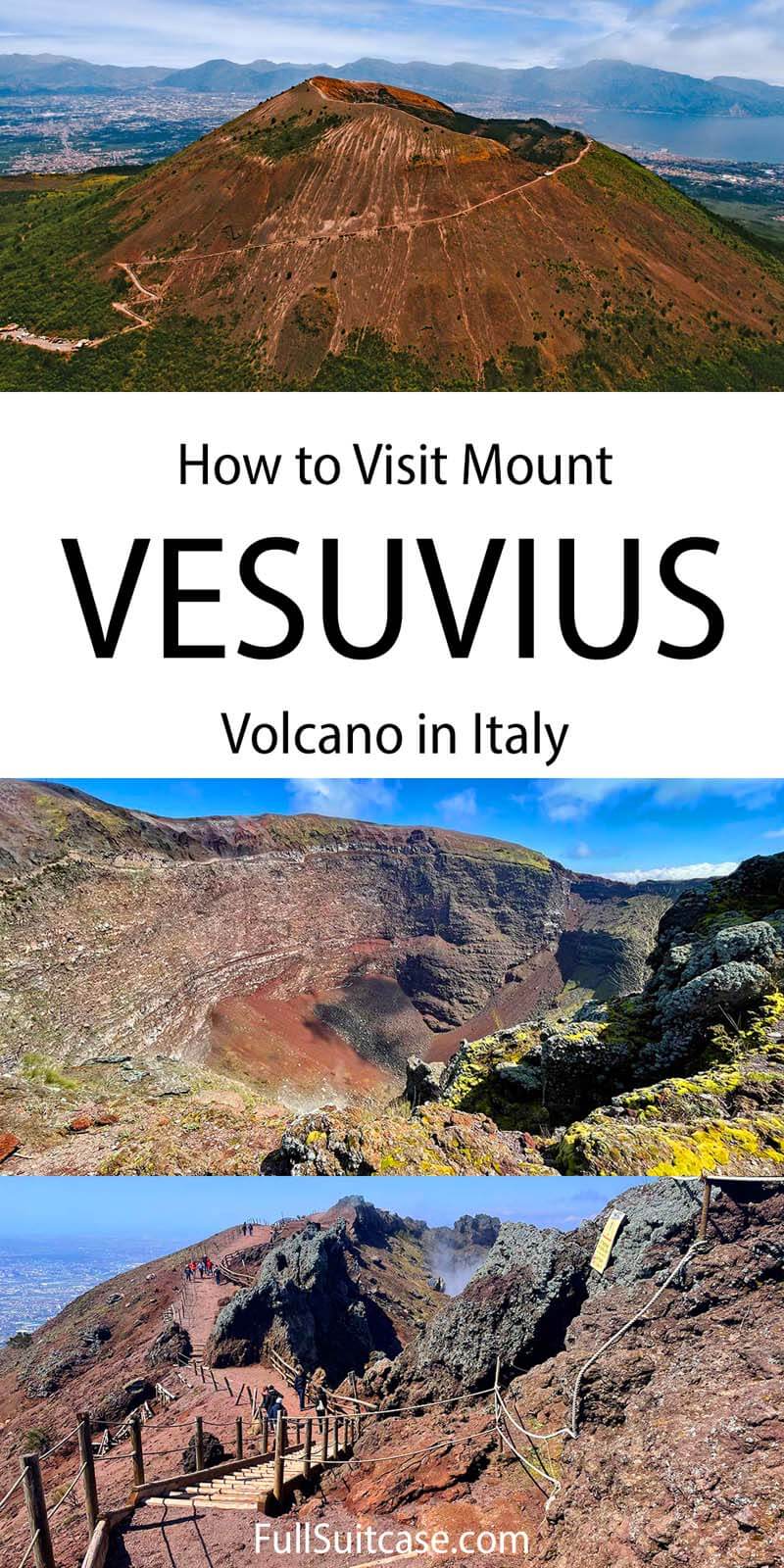
Some travel inspiration for Italy:
- Best places to see in Italy
- Italy itinerary for 2 weeks
- Best cities to visit in Italy
- Best things to do in Rome
- Hidden gems of Rome
- Best things to do in Venice
- Best things to do in Florence
- Best things to do in Milan
- Best things to do in Siena
- Best things to do in Verona
- Best things to do in Bologna
- Best things to do in Ravenna
- Best things to do in Rimini
- Hiking in the Dolomites
- Best places in the Dolomites
- Visiting Cinque Terre
- Best towns in Tuscany
- Bellagio, Lake Como
- Varenna, Lake Como
- … for more destinations all over Italy, please see our Italy travel guide . For general tips, check out our step-by-step guide for planning a trip to Europe .
This site uses Akismet to reduce spam. Learn how your comment data is processed .
Monday 1st of April 2024
You are an absolute hero, or heroes if there's more than one of you that prepared this guide. ByI far the best thing I've seen. I don't know if you answer questions, but because of time limitations, it would be best if we drove from Rome directly to Vesuvius before going to our hotel in Pompeii after seeing the volcano. Do you think it's safe to leave luggage in the car for that amount of time in one of the parking lots? Thank you!
Thursday 4th of April 2024
@Jurga, thank you! And i now realize that you're a HEROINE.
Hi Tony, in general it is safe. Just don’t leave any valuables and ideally nothing in sight. But if you just put your suitcases in the trunk of your car and take your documents, cameras, etc. with you, it should be ok. Have a great trip!
Saturday 13th of May 2023
Hi Jurga, thanks for this guide. It's so useful. We are going by car and booked parking and park entry already. Do you think we can visit Pompeii and or Herculaneum on the same day as well? What do you recommend? Thank you!
Monday 15th of May 2023
Hi Sepe, depending on when exactly you are going to Vesuvius, you can most likely visit either Herculaneum or Pompeii. It would be a bit rushed to do all three in a day, unless you start very early and rush through. But visiting Mt Vesuvius and one of these archeological sites is definitely doable and will make a great day trip. PS Whatever you decide, be sure to book those tickets (or a guided tour) in advance! We visited Pompeii with a guide and I can highly recommend that - otherwise, it's overwhelming. We stayed inside to explore a bit more after the tour, so it was the best of both worlds.
Luisa Rodriguez
Friday 12th of May 2023
I plan to visit Mt Vesuvius. Is there a public bus [EAV] from Mt Vesuvius to Ercolano Scavi?
@Jurga, yes I know about this ROUNDTRIP option but my question is for a one way bus from Mt Vesuvius [a public bus not a private company] to the Ercolano Scavi train station.
Hi Luisa, as far as I know, this bus from Ercolano is as close to public transport as it gets. Hope this helps.
Buy the official tickets here
Spend a day immersed in the wonders of Mount Vesuvius and discover its history, its paths and the plants and animals that inhabit its slopes.
For additional information and to know more about the most famous volcano in the world, click on “BUY THE TICKETS” , you will be redirected to the website of our official dealer.
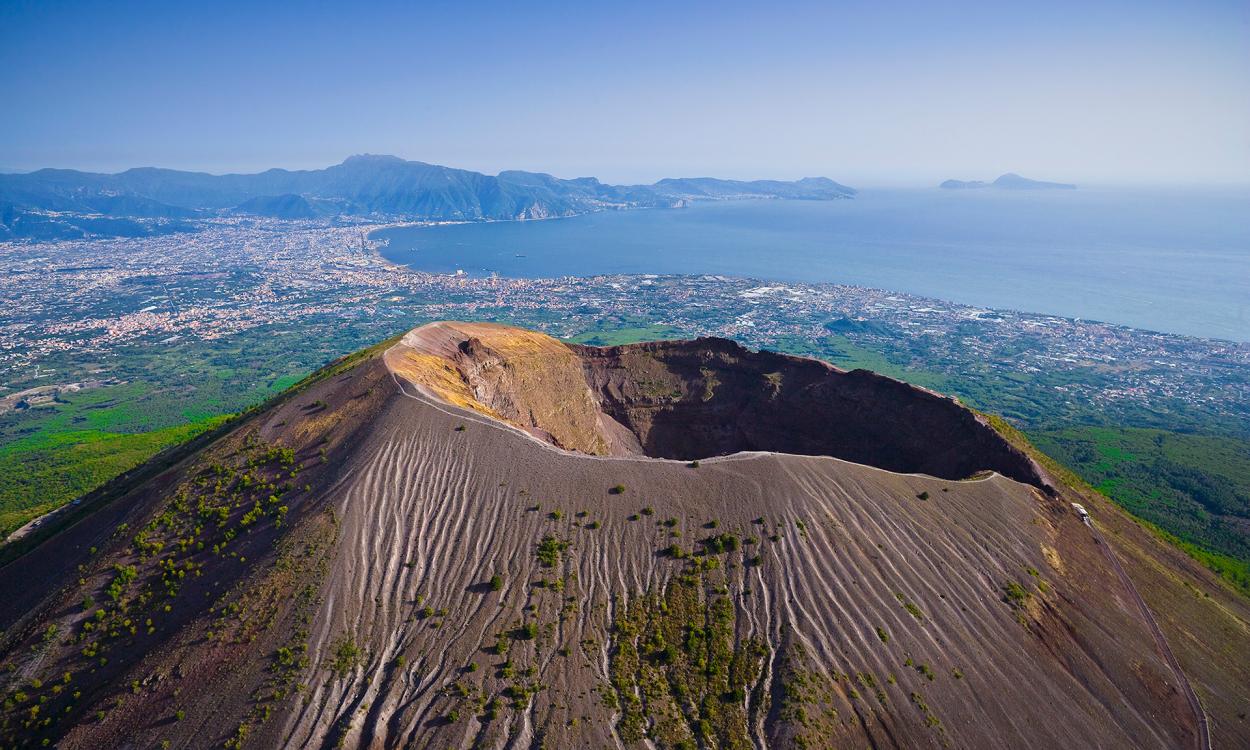

Why choose us
- Biglietto Offical Tickets
- Coccarda Authorized Dealer
- Smile Satisfaction Guaranteed
- Bandiera English speaking guide
Hi there! Write a message below and we will get back to you as soon as possible.
- Amalfi Coast
Mt. Vesuvius Tours
Choose and book your experience online
A tour to Vesuvius is a unique experience that will take you to the crater of one of the most famous volcanoes in the world. You'll be fascinated by the power of nature and the thousand-year history that has profoundly marked the areas surrounding Naples and Campania. From the top of the volcano, you can reflect on the impact that the eruption of 79 AD had on Pompeii and Herculaneum, whose ruins are located not far away. You'll also enjoy spectacular views of the Gulf of Naples .
To further enhance your experience, you can combine the Vesuvius tour with visits to the Pompeii and Herculaneum archeological sites . This will let you fully comprehend the history of these ancient cities before admiring the volcano that immortalized them. You can also discover the local wine cellars, where the unique volcanic soil gives the wines a distinctive character.
Get ready for an unforgettable day, full of adventure, history, and the breathtaking views that only Vesuvius can offer.
The 5 Best Mount Vesuvius & Pompeii Tours from Naples [2022 Reviews]
If you're traveling in the naples region, here are 5 great tours to consider.
Mount Vesuvius is the only currently active volcano in Europe. In fact, it has been very active for over 2,000 years since it’s first devasting eruption in 79 AD. Pompeii was the ancient city situated below the volcano that received the wrath of Mount Vesuvius then.
There have been several smaller eruptions since then, the most notable of which happened in 1944. Visiting Pompeii and the volcano that covered it in ash can help you not only realize the deadly force of volcanos but also to see this ancient city preserved under layers of ash.
Walking through Pompeii feels almost like you stepped back in history and are viewing it from a villager’s eyes. Their everyday life is apparent, but so is the fear they faced that day.
If you’re headed to Italy, especially Naples, your trip won’t be complete without a tour of Mount Vesuvius and Pompeii. Which one is best? Take your pick!
Best Mount Vesuvius & Pompeii Tours
Quick answer: the 5 best tours of mount vesuvius & pompeii from naples.
- From Naples: Pompeii Ruins & Mount Vesuvius Day Tour
- Pompeii & Herculaneum: Full-Day Sightseeing Tour from Naples
- Pompeii and Amalfi Coast Day Tour from Naples All Inclusive
- Naples: Day-Trip to Mount Vesuvius
- Pompeii, Herculaneum & Vesuvius drive from Naples
Best Mount Vesuvius and Pompeii Tours from Naples Reviews
#1 from naples: pompeii ruins & mount vesuvius day tour.
- Departure Point : Hotel Pickup
- Departure Time : 10 AM
- Duration : 7 hours (approx.)
- Includes : Hotel pickup and drop off, expert guide, tour of Pompeii and views from Mount Vesuvius, pizza lunch
Your guide is an expert in the history of Pompeii and the cities around it that were also destroyed in the 79 AD Mount Vesuvius eruption. As you are taken past the Forum and the thermal baths, you will learn why these were important to daily life in the Roman Empire.
You will also most likely see active archeological activities taking place in Pompeii. Your guide can tell you who is currently working there and what they hope to find. Archeological digs in the area prove just how devastating the damage was, but also how well-preserved the city is.
With a short stop for a traditional Italian lunch of pizza and a hydrating drink, you’ll then head to the summit of Mount Vesuvius. At one time, be in awe of the horrific damage this volcano is capable of and view the beauty of Naples across the bay.
For tour prices, transportation and availability:
Other experiences you may enjoy:, #2 pompeii & herculaneum: full-day sightseeing tour from naples.
- Departure Time : 8 AM
- Duration : 8 hours (approx.)
- Includes : Tours of Pompeii and Herculaneum, expert guides, lunch at Vesuvio Restaurant, air-conditioned travel
When you arrive in Pompeii after your hotel pickup and your group is ready to go, you will be lead by an expert guide, licensed in telling the facts, history, and legends of the area. Learn about traditional life in a Roman colony and see the locations most important to them, such as the theatre and the thermal baths.
Before heading to Herculaneum, take a few minutes to relax with a traditional Naples lunch at the Vesuvio Restaurant and take a tour of a factory nearby. You will learn more about how they make their items. There will be time if you’d like to pick up a souvenir or two while you’re here.
The exploration of Herculaneum is largely independent. Instead of being taken on a guided walk of this ancient city, you will be able to walk the streets, peer into houses, and ponder on preserved artifacts all on your own. What better way to tour an ancient city?
#3 Pompeii and Amalfi Coast Day Tour from Naples All Inclusive
- Departure Point : Hotel or Cruise Ship Dock Pickup
- Includes : Light lunch and bottle of water, skip-the-line entry at Pompeii, stunning views, time for shopping or swimming in Amalfi, guided tour by live guide or audio recording
Even as many archeological digs are taking place throughout Pompeii, you will be guided through the streets of what used to be a bustling Roman city.
The houses of ordinary citizens can now be compared to those of the wealthy. The shops, bars, and cafes frequented by many are all very well preserved. You’ll even get to tour an ancient Roman brothel.
The Amalfi coast stands in stark contrast to the ruins of Pompeii. Instead of ash and sand, the homes along the coast are painted brightly, seen even from far away. Viewing the villages along the coast from the water is unique but looking through or over the city of Positano into the clear blue waters of the ocean is even better.
After your photo op stop in Positano, you’ll head to Amalfi. Here, you can walk the streets, take photos, shop for some souvenirs, or even go for a swim. Nothing quite like taking a tip in the crystal-clear waters of Italy’s Amalfi coast.
#4 Naples: Day-Trip to Mount Vesuvius
- Departure Point : via Domenico Capitelli, 9
- Departure Time : 9 AM
- Duration : 4 hours (approx.)
- Includes : Bus transportation, professional alpine guide, entrance to Mount Vesuvius
What is it about Mount Vesuvius that made it so devastating? Have we learned about other volcanoes around the world by studying the devastation in Pompeii?
The only people who can really answer those questions, and others, are the professionals that guide travelers to the summit of the volcano each day. Mount Vesuvius sits inside a national park and is protected. The guides are experts in volcanoes, especially Vesuvius.
After meeting in central Naples, you’ll board a bus and head to the Mount Vesuvius national park. The hour or so of city driving can provide great photo opportunities, time to catch up with other travelers, and the rest that’s needed for the short walk to the volcano’s summit.
Once there, you will get a rundown of the area’s geology and history. Questions are encouraged as you walk with your guide up to the summit and then around the crater. Be sure to take pictures not only OF Mount Vesuvius but FROM it as well. The stunning views of Naples and the Bay of Naples are not to be missed.
#5 Pompeii, Herculaneum & Vesuvius drive from Naples
- Departure Point : Fortuna Village Pompei – Via Plinio, 80045 Pompei NA
- Includes : Private tour of both Pompeii, Herculaneum and Mount Vesuvius, licensed guide, transportation to each site and then back to Naples
Before Mount Vesuvius erupted in 79 AD, Pompeii was a shining example of the Roman Empire. Your licensed guide will show you the proof that’s been left behind under thick layers of ash. This location has almost been classified as an active archeological site, as far back as the 1800s.
While on your guided, private tour of Pompeii, your guide will take you past the Porta Marina, also called the Sea Gate. As with any proper city owned by the Roman Empire, the Forum was the center for both political and social life for everyone from peasants to Pompeii’s elite.
You’ll stop for a bit at an eatery just steps away from the Pompeii ruins so you can refuel with a great lunch before heading up to the crater of Mount Vesuvius. The quick ride and short, uphill walk is worth it when you not only see the massive crater, but also the stunning view of the Bay of Naples.
Naples, Italy Travel Guide
Even though Naples is the 3 rd -largest city in Italy, it tends to not get the same tourist attention as say, Rome or Florence. However, there are many reasons to add Naples, or Napoli in Italian, to your list of next vacation spots.
Naples has many historic attractions that rival those in larger Italian cities and because of fewer tourist crowds, many historic locations, as well as accommodations and restaurants, are not so busy.
If you’re looking for a truly Italian experience, you don’t want to skip out on Naples. It’s unique in many ways and the only way to experience is it with feet on the ground with a well-planned trip. Here’s how!
Airports & Entry
Planning tips, restaurants & eating out, nightlife & entertainment, getting around, accommodations, attractions, ready to book your flight.
While there is an airport in Naples, it tends to only receive flights from Italy or nearby European locations. Most likely, if you air flying to Naples, your international flight will stop at a major hub in Europe and then head to the Aeroporto Capodichino. The Napoli International Airport usually doesn’t see flights coming from other continents, such as the Americas or Asia.
Naples is also serviced by many train lines and coach routes that originate up north. If you have the time, experiencing Rome and then taking a train through the Italian countryside to Naples is the ideal way to see the most while visiting Italy.
Visiting different cities in Italy, and other hot spots like Paris and London provides vastly different experiences. This is why we love to travel, right? However, that also means that planning for a trip to Naples is unlike planning for other trips.
Tip #1: Bring Walking Shoes
Naples is a very “walkable” city. Many attractions are very close to accommodations and restaurants, or at least close to convenient transportation such as the subway or busses. However, while things look close together on a map, Naples has many hills. Some of them are tall, some steep, and some both.
When planning the next location to head to, be sure to ask someone nearby, or even an employee at a store or restaurant, what the walk is like. If it nearing the end of the day and you are already tired, you may want to grab a cab instead of walking.
Tip #2: Enjoy Authentic Neapolitan Pizza
Naples invented pizza. While you can order pizza at many restaurants around the city, you’ll want to find a restaurant that offers the real thing. For anyone to call their pizza authentic, there are rules about the ingredients they must use when making them. For an even better pizza experience in Naples, find a restaurant that cooks their pizzas in a wood-fired oven.
Tip #3: Don’t Forget the Beach
While there are many places to see and experience in Naples, from the historic district to the more modern areas, you might want to plan a day to enjoy the beach. The beach offers many seaside cafes and bars so there’s really no reason to leave the beach once you get there. This means it’s time to grab a towel, sit back under an umbrella, and enjoy a limoncello. What is limoncello ? It’s a lemon liqueur famous in southern Italy.
Tip #4: Plan for Several Tours
Which so much to see and do in Naples, it’s nearly impossible to create your own itinerary that will take you everywhere you’d like to go. Not only do pre-planned tours take you to all the hotspots, they can usually offer exclusive or priority access, not to mention the expertise of your guide if you choose a guided tour.
Tip #5: Explore the Surrounding Areas of Naples, Italy
Naples is pretty large considering only Rome and Florence are bigger in both size and population. However, you may want to go for a scenic drive to a winery just outside town or even go for a ride to a great overlook to see the city that isn’t within city limits.
You may also want to head out on the water. Many boats take visitors to the Island of Capri, with its many grottoes, as well as to the many other islands in the Bay of Naples. The bay here is central to commerce in southern Italy, but it also happens to be one of the most beautiful.
Since pizza was invented here, it’s only fitting that you try an authentic, Neapolitan pizza. Many restaurants serve pizza, but only authentic pizza is made to strict requirements, including the ingredients used. The international regulations for Neapolitan pizza are important for many pizzerias in Naples.
Pizza wasn’t the only food dish invented in Naples. The very first “plate” of eggplant parmesan was also served here. Both pizza and eggplant parmesan have become staples the world over, so why not try it where it began?
As Naples is a coastal city, it also means great seafood. You’ll find the freshest in the restaurants nearest the harbor or nearest the beach. Naples has it’s own beach-scene so if you’re craving seafood, that’s where you’ll find it.
If you’re looking for entertainment that isn’t a year-round thing, there are several times of year that are ideal for visiting Naples. During Christmas, there are hundreds of nativities set up nearly everywhere you go. Easter has parades down Via San Biaggio and other main streets.
There are many cities that are ideal if you are looking for a New Year’s Eve bash like no other. While Naples may not be able to compete with the likes of New York City, Sydney, or Paris you may want to give it a try. When in Italy, not even Rome can beat the New Year’s Eve celebrations that Naples offers both locals and visitors.
If you are looking for the nightlight and entertainment in Naples that you can enjoy any day of the week, any week of the year, there are many different scenes to experience. Naples is a diverse city when it comes to nightlife and you can find nearly anything you’re in the mood for.
The Bourbon Street Jazz Club is for visitors and locals alike. If you are a fan of great off-the-cuff jam sessions, you’ll want to stop by one night. The beach scene is Naples is as unique as the limoncello they are famous for.
Nabilah is a great stop just off the beach. It may be a bit hard to find as the entrance is down a very narrow and unassuming back alley, but you’ll know you’ve found it when you hear the casual tunes.
The Lanificio 25 is one place you just have to schedule into your nightlife adventures in Naples. It is built into a building that used to be an old wool factory. It definitely has that old-world vibe that Naples is famous for, but you’ll also be able to see, hear, and feel much of the culture of the area.
Every night at Lanificio 25 may be something different, so check their online schedule. Small, local bands often perform, and you might hear a DJ playing everything from metal to alternative. Up for an art show? Maybe a play? This is the place.
There is no shortage of ways to get around in Naples. However, the one way you don’t want to take is a rental car or other vehicle that you will be driving. The city is very hectic and many local drivers can be aggressive. Most visitors won’t be used to driving in the kind of traffic they have in Naples.
One of the best ways to get from place to place is just walking. This is especially true if you are seeing many attractions within the same district. Be sure to find out how many hills you may have to walk up before setting out though.
Within the city, you will also find a well-designed bus and subway system. These are often crowded but they make for an easy way to get from place to place. If heading out of the city, trains are the way to go.
In many cities, visitors are warned about not taking cabs. In Naples, however, they are an affordable way to get around and cabbies are very knowledgeable. They may be able to tell you what time the museum opens, the best restaurant for pizza in the area, and other things. Cabbies in Naples are usually very friendly, and fair when it comes to the meter.
There are accommodations and every possible level in Naples. If you are looking for a great place to stay long-term and need something inexpensive, hostels are a great choice. Some of the hostels here even offer laundry services or a kitchen you can use to prepare a meal or two, saving you some cash. Many even offer stays for groups or families. Two popular Naples hostels are the Hostel Mancini Naples and the Naples Experience.
On the other side of that, there are plenty of upscale hotels. They tend to be located in many areas around the city so you can find one nearest to your planned activities. The Grand Hotel Vesuvio is regarded as one of the best hotels in Naples. The Hotel Napoli is also popular. An upscale hotel may offer services such as concierge, spa, and others.
Most people visiting Naples are looking for accommodations somewhere between a hostel and a grand hotel. Naples is home to several chains of hotels. Not only does this give you a familiar feel if you are used to staying with them, but you can also use many of the reward programs that accommodation chains often offer. Ramada Naples and Holiday Inn Naples are favorable with visitors, offering free breakfasts, discounted attraction tickets, great locations, and even parking if you have your own vehicle.
Because Naples is situated on the coast, the summers can get very hot and humid. This definitely isn’t comfortable when walking around the city although most public transportation is air-conditioned. However, that same coastal location makes winters very mild. If you don’t mind a chilly morning or two, visiting Naples in the winter can mean smaller crowds and maybe even a cheaper room rate at your accommodation of choice.
Spring and Fall are the most popular times to travel to and visit Naples. The temps are usually very moderate and while a quick rain shower may spring up, for the most part, you will see sunny skies. Expect much larger crowds if traveling during these peak tourism times.
There are places in Naples that you just can’t see anywhere else. For example, the National Archaeological Museum of Naples has many artifacts that have been recovered from Pompeii and surrounding areas. Some were even excavated from areas of Rome or Cinque Terre.
Just as with many other cities in Italy, the churches and their architecture are popular for visitors. Many are located within a small area in the historic district so planning a day to see them isn’t difficult. There are many guided tours of them, so you can learn more about their architecture, their history, and the legends surrounding them. The San Lorenzo Maggiore and the Duomo are two must-see churches in the area.
Every city has that main street where it seems everyone gathers, there’s a lot of shops and restaurants, and it’s the perfect place to see the true culture of the city. In Naples, it is Via San Biaggio. It is sometimes referred to as Spaccanapoli, the heart of Napoli, or Naples. You could spend an entire day here taking in the sights, sounds, and flavors of Naples.
While being an Italian city inside and out, Naples also has its own personality. If you truly want to experience Italy, Naples should be on your must-see list. Of course, you’ll probably want to take a few tours of Rome to see all the history as well. And there’s no missing out on wine tasting tours in Florence. In Naples? It’s the food, the architecture, the music, the culture… and so much more!
Price / Value
Scenery and diversity.
We chose the Pompeii and Vesuvius Full-Day Tour from Naples Port as our Editor's Choice for the region.
Krysha Thayer
Related articles, the 5 best stonehenge tours from london [2024 reviews], the 5 best wine tours from florence [2024 reviews], the 7 best vatican tours ⛪ [2024 reviews], the 5 best seine river dinner cruises [2024 reviews].
Visit Mount Vesuvius: everything you need to know
- 1st June 2020 7th May 2020
- Travel Tips
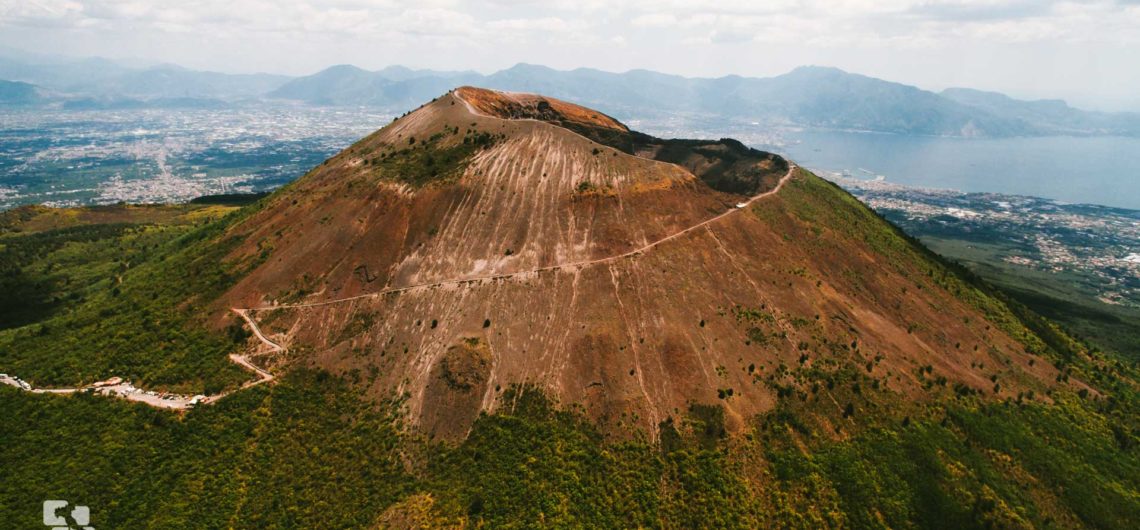
Are you planning to visit Mount Vesuvius but can’t find enough reliable information? Let us take care of it! Here is everything you need to know if you want to climb Mount Vesuvius to the crater’s top: travel tips, information , how to reach it and the most frequently asked questions all contained in a single article!
The Mount Vesuvius was the first volcano ever described in History during the eruption “of Pompeii” on 79 AD. It is “The Volcano”. Not only: the Mt Vesuvius is considered the most dangerous volcano on planet earth due to hundreds of thousands living on it. It must be in your bucket list if you like Outdoors and Scenery! The views from the lips of the crater to the Bay of Naples, Capri and the peninsula of Sorrento are unforgettable. On a clear day, it is hard to say whether is better to look inside the crater or stare out to the infinity.
“ The secret for harvesting from existence the greatest fruitfulness and the greatest enjoyment is: to live dangerously! Build your cities on the slopes of Vesuvius !” F. Nietzsche
Table of Contents
IS IT SAFE TO VISIT MOUNT VESUVIUS?
In a word – yes. The last eruption took place in 1944. The volcano is technically speaking active, but there are usually warning such as earthquakes in the case of a volcanic event. It is really unlikely that Mount Vesuvius would wake up all of the sudden during your hike up the crater. Would I want to buy property on the side of this volcano? No!
HOW LONG DO I NEED?
Any time from 3 hours up. It will depend on your choice of transport. Essentially: the driving part from the town of Torre del Greco to the beginning of the trail takes about 45 minutes each way. The hiking part takes 90 minutes, including walking up and down and wondering at the top to enjoy the great views of the main crater “Gran Cono” and the Bay of Naples.
TICKET OFFICE OPENING TIME:
From March to October from 9 am to 6 pm April, May, June and September from 9 am to 5 pm July and August from 9 am to 6 pm From November to February from 9 am to 3 pm
You must buy tickets at least 90 minutes before closing time. This is how long you generally need to walk to the top of the crater and back. Bring cash!
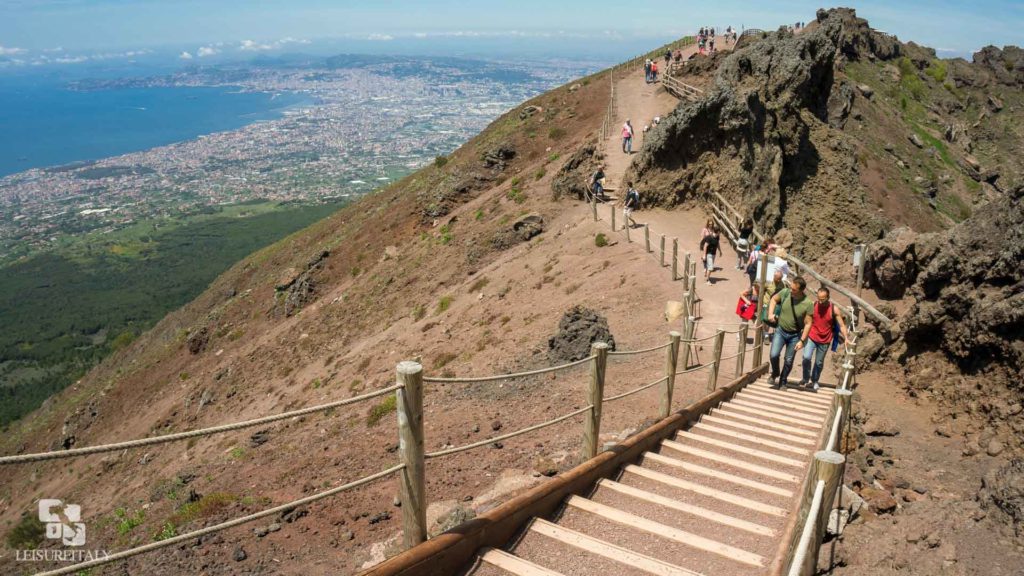
IS IT A HARD WALK?
You can only reach the top of the crater by hiking. The trail to reach the top of Mount Vesuvius has a moderate-high difficulty. It is steep and quite uneven. There are no benches to sit nor there is any shade. Would any member of the group suffer from a medical condition there is a café at the “Piazzale” before the entrance to the trail where one can have a drink and wait.
WHEN IS BEST TO VISIT MOUNT VESUVIUS?
Traveling off-season in Italy has several advantages. But Mt Vesuvius during the winter can inaccessible due to bad weather or even snow. Leisure Italy recommends to avoid the extremes: it would be ideal to visit Mt Vesuvius either from the beginning of April until mid-June or from the end of August until the end of October. Especially during springtime, the yellow and the purple of the Brooms and the Valerian is a joy for the senses. To stay away from the crowd, we recommend being there at the opening time: there hardly is any visitor at the ticket office before 9.30 am. Another factor is the visibility from the top of the crater: the weather can shift quickly up there, so be prepared. Unfortunately this is unpredictable. The rule is: if you cannot see the crater from the bottom, do not climb up there!
WHAT TO BRING?
The height of the cone of Mt Vesuvius is 1,281 meters (over 4000 feet). Wear walking shoes, bring water, a wind-jacket, sunglasses and a hat. Sandals are OK but your feet will be dirty with ashes and lots of little pebbles will end under your feet. Toilet paper can be very useful given the conditions of the chemical toilets up there. By the way, use the toilet before you go! Also, be aware that at the beginning of the trail you will be offered some wooden sticks to help you visit Mount Vesuvius. It seems complimentary but you will be asked for money on the way back.
IS THERE FOOD AND WATER UP THERE?
There is a small coffee/gift shop before the trail starts. It works if you need a snack or a drink. It can also be a good spot to rest would any member of the group not feel to climb to the top. Do not expect to find any real meal up there.
DO I NEED TO HIRE A GUIDE TO VISIT MOUNT VESUVIUS?
The admission fee includes a short commentary by a local guide. That takes place once you reach on foot the top of the crater. Official guides will offer complimentary shared tours in multiple languages. This introduction takes about 5/10 minutes and it takes place every few minutes. Then you are free to discover on own. It is possible to walk half the way around the lips of the volcano. You cannot walk all the way around. You do not need to have your private guide.
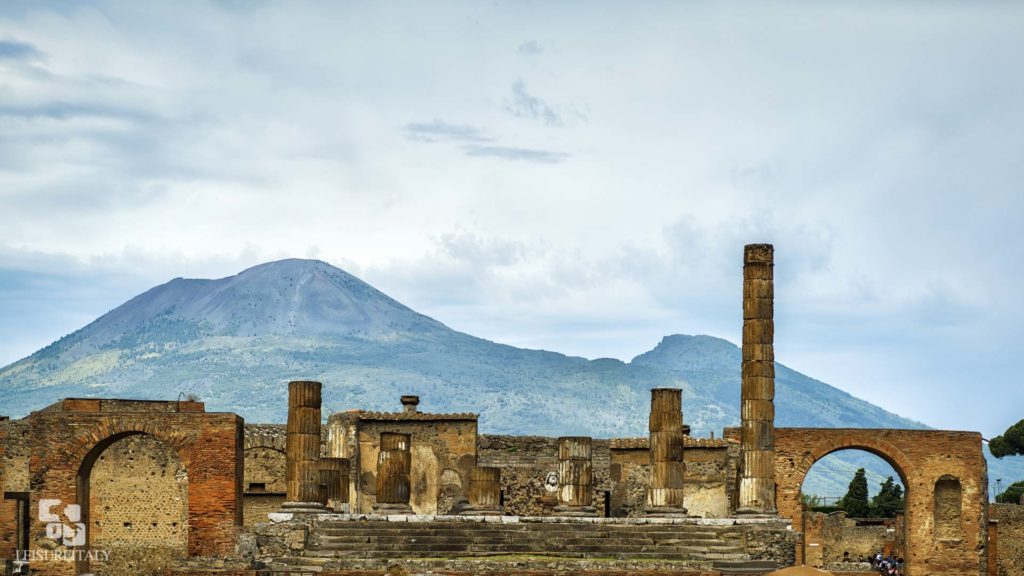
CAN I VISIT MOUNT VESUVIUS AND POMPEII ON THE SAME DAY?
The answer is yes, but it is quite ambitious. Especially if you are not using the services of a tour company the time factor is against you: Pompeii is larger than you expect, reaching the top of Mount Vesuvius can take longer than you expect. You may want to consider the visit to Mt Vesuvius and Herculaneum on the same day, this latter being much smaller than Pompeii. You can check the difference between Pompeii and Herculaneum in this article . The other factor you shall keep on mind is the weather. The visit to Mount Vesuvius and Pompeii (or Herculaneum) is going to be smooth during Spring and Fall, it can be challenging during the Summer. If you are planning to visit Mount Vesuvius and Pompeii on the same day here is our recommended tour.
HOW DO I REACH THE TOP OF MT VESUVIUS?
If you are planning to visit Pompeii or Herculaneum on the same day our recommendation is to hire a private tour to make the best of your time. If you are not concerned by time here are several solutions:
If you come from Naples:
- by car, you can drive the A3 toll highways toward Salerno, exit at Torre del Greco and follow the brown sign “Parco Nazionale del Vesuvio” – about 1 hour to the top
- by bus, take the EAV bus service from Piazzale Piedigrotta in Naples – about 1 hour to the top
If you come from Pompeii:
- take the A3 toll highway toward Naples, exit at Torre del Greco and follow the brown sign “Parco Nazionale del Vesuvio” – about one hour;
- by bus: you can either use the public EAV bus service or one of several private bus tours offered immediately outside the train station – about one hour to the top. Private bus-tours are more slightly more expensive but it normally includes the admission fee to the crater
If you come from Sorrento:
- by car, take the SS 145 toward Naples, then take the A3 toll highway, exit at Torre del Greco and follow the brown sign “Parco Nazionale del Vesuvio” – about 90 minutes;
- by public transport: take the train “ Circumvesuviana” f rom Sorrento to Pompeii Villa Dei Misteri – 30 minutes train ride, a train every half hour. From here follow the instructions above from Pompeii
If you come from Positano:
- by car, take the SS 145 toward Naples, take the A3 toll highway, exit at Torre del Greco and follow the brown sign “Parco Nazionale del Vesuvio” – about 90 minutes;
by public transport: take the SITASUD bus from Positano to Sorrento and then follow the information above from Sorrento
IMPORTANT INFORMATION FOR INDEPENDENT TRAVELERS
There only is one road to visit Mount Vesuvius to the crater’s edge. If you are driving yourself you are obliged to park about 2 miles away from the ticket office. From this parking you can either walk (not recommended) or take the shuttle taxi service (small individual fee to pay on board) from the parking to the ticket office. Once you have your ticket the shuttle will bring you further up where walking trail starts, this area is called the “Piazzale”. If you are part of an organized excursion or you are using any bus service you are not going to need the shuttle taxi service. More information about the access can be found on the Mt Vesuvius National Park official web site .
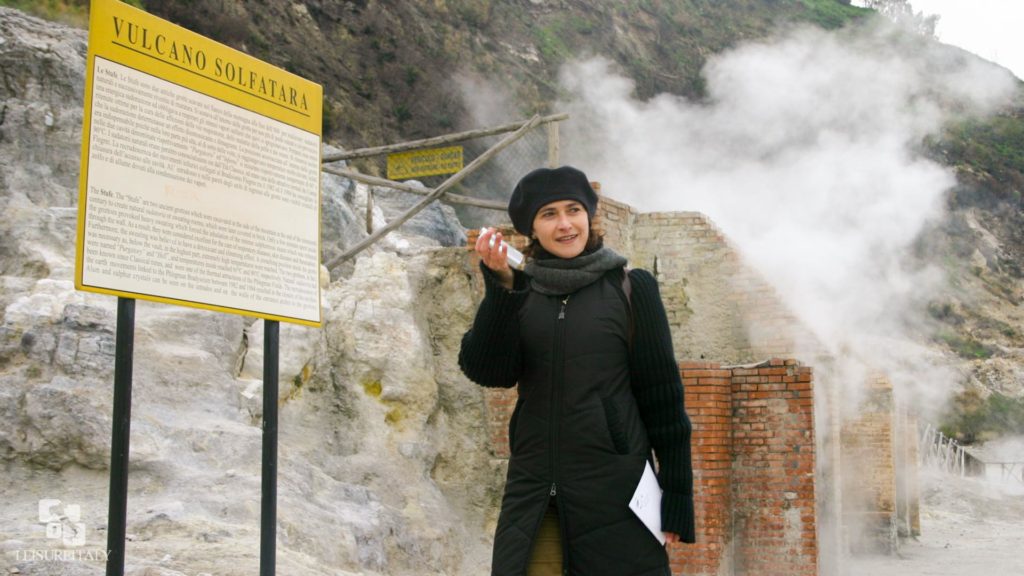
OTHER VOLCANOES IN THE AREA?
Absolutely yes! The Phlegraean Fields is a supervolcano a few miles west of Naples. It consists of 24 craters with plenty of hydrothermal activity. This area was also used as a thermal resort by the Roman Imperial family: marvel at the outstanding archaeological remains visible everywhere in this area. Visiting the Phlegraean Fields can be a relaxing off-the-beaten-track stop during your Italian journey. The volcanic island of Ischia is a lovely place to stay and enjoy natural springs. On the mainland you can see spectacular geysers at La Solfatara , but at present (April 2020) this small volcano with a camping-ground inside is not open to the public.
Did you know that? The famous Neapolitan song “Funiculì Funiculà” was written to celebrate the opening in 1880 of the first funicular cable car that reached the top of Mount Vesuvius. Unfortunately this cable car was destroyed during the last eruption in 1944 and never reopened to the public.
The visit to Mount Vesuvius can be the perfect excursion from Naples or Sorrento or Positano , and it combines with a tour to Pompeii or Herculaneum on the same day. Another great idea could be that of visiting Mount Vesuvius pairing a relaxing lunch at one of the wineries in the National Park of Mt Vesuvius. Please check our favorite wine tasting here .
We hope this article will be useful for your unique travel experience: have fun! Please share this article if you believe it was of helpful and interesting!
Leave a Reply
You must be logged in to post a comment.

Exploring The Beauty Of Italy: Top 4 Must-See Attractions
Italy is a country with a rich history, stunning architecture, delicious cuisine, and beautiful landscapes.
From the ancient ruins of Pompeii to the towering heights of Mount Vesuvius, there are plenty of amazing places to visit in Italy.
In this article, we will explore four top attractions in Italy that you must see when you visit this beautiful country.
The Colosseum, Rome
The Colosseum is one of the most iconic structures in Rome, and it's a must-visit for anyone interested in ancient Roman history.
This massive amphitheater was built over 2,000 years ago and could hold up to 50,000 spectators.
It was the site of many gladiator battles, wild animal hunts, and other public spectacles.
Today, you can tour the Colosseum and learn about its history and significance. You can also explore the underground tunnels where the gladiators and animals were held before their battles.
Be sure to book your tickets in advance to avoid long lines.
The Vatican City, Rome
The Vatican City is a tiny, independent city-state located within the city of Rome. It's the smallest country in the world, but it's also one of the most important centers of Christianity.
The Vatican City is home to many amazing attractions, including St. Peter's Basilica, the Sistine Chapel, and the Vatican Museums.
When you visit the Vatican City, be sure to take a guided tour to learn about its history and significance. You can also climb to the top of St. Peter's Basilica for stunning views of the city.
And don't forget to visit the Sistine Chapel to see Michelangelo's incredible frescoes.
Things To Do In Pompeii
Pompeii is an ancient Roman city that was destroyed by the eruption of Mount Vesuvius in 79 AD. The city was buried under layers of ash and pumice, which preserved many of its buildings and artifacts.
Today, Pompeii is a UNESCO World Heritage Site and a fascinating place to visit.
When you visit, there are several things to do in Pompeii , you can explore the ruins of the city and see how the ancient Romans lived.
You can see the remains of houses, public buildings, and even a brothel.
You can also see plaster casts of the eruption's victims, which give a haunting glimpse into the city's final moments.
Mount Vesuvius Tickets
Mount Vesuvius is the volcano that destroyed Pompeii and is still an active volcano today. Visitors can hike to the summit of the volcano to see incredible views of the surrounding landscape.
The hike is challenging but rewarding, and it's a unique way to experience the natural beauty of Italy.
Before you book Mount Vesuvius tickets, be sure to purchase your tickets in advance.
You can buy tickets online or at the entrance to the park. And be sure to wear comfortable shoes and bring plenty of water for the hike.
Italy is a beautiful country with many amazing attractions to explore.
From the ancient ruins of Pompeii to the towering heights of Mount Vesuvius, there are plenty of unique experiences to be had.
Whether you're interested in history, art, or natural beauty, Italy has something for everyone.
When you visit Italy, be sure to plan ahead and book your tickets in advance. Many popular attractions, like the Colosseum and Mount Vesuvius, can have long lines and wait times.
But with a little bit of planning, you can make the most of your time in this incredible country.
The post Exploring The Beauty Of Italy: Top 4 Must-See Attractions appeared first on Kellys Thoughts On Things .

- Share full article

How a ‘Strange,’ ‘Evil’ Fruit Came to Define Italy’s Cuisine
When tomatoes first arrived in Europe 500 years ago, they were considered dangerous. Then in Naples they gave rise to pasta al pomodoro.
On the pedestal and swarmed by blue tomato hornworms, a mix of the Neapolitan purveyors Sabatino Abagnale’s Miracolo di San Gennaro tomatoes and Pasquale Imperato’s Pomodorini del Piennolo del Vesuvio, imported by Gustiamo in the Bronx. Credit... Photograph by Anthony Cotsifas. Set design by Victoria Petro-Conroy
Supported by
By Ligaya Mishan
Photographs by Anthony Cotsifas
- May 13, 2024
T’s May 19 Travel issue is dedicated to pasta in Italy, diving deep into the culinary traditions, regional variations and complicated history of the country’s national symbol.
ON THE COUNTER sits a bucket of tomatoes just picked from a tumble of fields halfway up a mountain in southern Italy. Concetta D’Aniello hands me an apron and we begin. I follow her lead, breaking into each tomato with my thumb, the flesh giving way. The smell of minerals fills the kitchen. Her husband, Sabato Abagnale, known as Sabatino — who grows and cans tomatoes, like his father before him — describes how the scent clings when you walk the fields in August. “Even when you shower, you can’t get rid of it,” he says. (We speak through an interpreter, Sandra Gambarotto.) It’s late October now and the end of harvest; these tomatoes are the stragglers, still dreaming of summer, sun-gorged and supersweet.
Listen to this article, read by Emily Woo Zeller
The pan waiting on the stove is almost wider than the circle of my arms. A slick of olive oil, garlic cloves dropped in whole and a chop of peperoncino: it’s a matter of a moment, garlic into gold, just long enough to leave an imprint on the oil before they’re skimmed out with a spoon so as not to overpower the sauce. The tomatoes go in all at once, with seeds and skins, and my part is done. D’Aniello turns up the flame, shakes the pan and with a swift glissando of the fingers flicks down salt from on high. All the while, the pasta is boiling in a pot alongside. Torn basil, a ladleful of cloudy pasta water, another and then the pasta itself is swirled in the pan until it half-disappears into the red. “We eat tomato with pasta, not pasta with tomato,” she says.
This is the last time D’Aniello and Abagnale, who are in their 50s with two grown daughters, will eat pasta al pomodoro made with fresh tomatoes until next August. After this, D’Aniello will use preserved tomatoes, processed — or transformed, as Abagnale puts it — under our feet in the clean and bright basement of their home, here in the small town of Sant’Antonio Abate, about 20 miles outside of Naples. First the tomatoes are pasteurized in a vat at the precise boiling point of water, 212 degrees Fahrenheit, for an hour, then in a tank at 122 degrees for 20 minutes. With industrial production, Abagnale points out, it would be longer, at higher temperatures. “You kill everything, but also flavor,” he says. Afterward, the tomatoes are left to cool and rest for 60 days. They taste even better as they age, he tells me. “Three years would be ideal. But no one can wait that long.”
Elsewhere in the world, pasta al pomodoro is seen as Italy’s “symbol of national identity par excellence,” the Italian historian Massimo Montanari writes in “A Short History of Spaghetti With Tomato Sauce” (2019) — despite its origins as a regional specialty predating Italian unification (between 1861 and 1871) by several decades, a creation of Naples when the city was still part of the sovereign Kingdom of the Two Sicilies. The dish was brought to the United States by Neapolitan immigrants in the late 19th century before it was fully embraced by their compatriots in the Italian north, as the Russian-born American writer Anya von Bremzen recounts in “National Dish: Around the World in Search of Food, History and the Meaning of Home” (2023). And yet the dish as first encountered by most Americans (or at least by those not of Italian descent) bears little resemblance to what D’Aniello cooks, in that its primary ingredient is neither fresh nor canned whole tomatoes but mass-produced spaghetti sauce from a jar.
For almost as long as spaghetti with tomato sauce has been eaten in America, people have sought shortcuts. In the 1890s, a French immigrant in New Jersey, Alphonse Biardot, produced what he called “spaghetti à la Milanaise” in a can — pasta, tomato sauce and cheese all included — then sold his company in 1915 to the Campbell Soup Company, which half a century later would come up with the idea of replacing long noodles with tiny rings that could be scooped up with a spoon: SpaghettiOs. Ettore Boiardi, an Italian-born chef in Cleveland, began offering customers a take-home version of his restaurant’s tomato sauce in 1927, eventually adopting the name Chef Boyardee as a phonetic concession to non-Italians. (“Sacrifices are necessary for progress,” he is reported to have said.) The Italian immigrant founders of Ragú, Assunta and Giovanni Cantisano, carried jars of tomato sauce door to door in Rochester, N.Y., during the Great Depression; the brand has now been subsumed into the Mizkan Group of Japan. Nearly 270 million Americans, close to 80 percent of the population, consumed commercial spaghetti sauce in 2020, as calculated by the data aggregator Statista.

Ready-made sauces — sughi pronti, as they’re known in Italy — are made both possible and necessary by modernity, with its insistence on optimizing every moment, on hurry up and now . Abagnale isn’t so interested in speed. Worldwide, around 190 million tons of tomatoes are commercially grown each year, with some 40 million tons destined for canned or bottled products; he keeps his annual output to 30,000 jars, weighing one to two pounds each, four to eight whole tomatoes per jar. (They’re available in the United States from the Bronx-based online grocer Gustiamo.) When he started his own business 26 years ago, he intentionally made it smaller than his father’s: Without the pressure of chasing more and more profits, he can concentrate on the minutiae of seeing each tomato’s life from planting to harvesting, which happens only early in the morning or late at night, with no more than seven hours allowed to pass between detachment from the vine and processing. “We live for six months with that tomato,” he says. “We know its phone number.”
When we sit down at his table, Abagnale says, “San Marzano is the most pimplike of tomatoes — it will do anything to please.” This means it’s as delicious raw as sautéed, even overripe, summer’s long brightness barely tempered. One forkful and I’m ready to dismiss every pasta al pomodoro I’ve had before, to declare D’Aniello’s dish the victor in some imagined battle going back in time, but I catch myself: In an age when we’re always clamoring for the best, when we demand of each experience some rapture or revelation, it’s a relief for something to be simply, beautifully good. If anything, isn’t pasta al pomodoro more marvelous for being utterly ordinary, as my hosts keep insisting? It’s a staple that may be perfected, with outstanding ingredients and the instincts of a great cook, but that to a certain extent resists innovation. I tell D’Aniello and Abagnale about the chef Mauro Uliassi, whose namesake Michelin-starred restaurant overlooks the Adriatic Sea in the resort town of Senigallia, around 300 miles to the north. He devised a recipe in collaboration with the Italian perfumer Hilde Soliani that used fig leaf butter to conjure the chlorophyll-heavy fragrance of the tomato plant in summer. Abagnale, who is intimately familiar with this scent, tilts his head, considering. I add that the Uliassi version was priced at 60 euros and he laughs.
Traditionally, pasta al pomodoro is “a dish of the poor,” he says, which is no diminishment, even a point of pride: It’s what you make out of the little you have, and that’s enough.
TOMATO IS THE prince of our cuisine,” D’Aniello tells me. Yet this ancient fruit, which may be traced back to a genetic ancestor no bigger than a blueberry that grew wild in what is now Ecuador around 80,000 years ago, is a comparative newcomer to Italy, its presence first documented in 1548, during the Spanish colonial era, half a century after Christopher Columbus made landfall in what is today Venezuela. As the Italian historian David Gentilcore explains in “Pomodoro! A History of the Tomato in Italy” (2010), a specimen was delivered to the nobleman Cosimo I de’ Medici at his palazzo in Pisa, likely obtained via the connections of his Spanish wife, Eleonora di Toledo. De’ Medici’s steward, in a letter confirming safe passage of the fruit, identified it as “pomodoro” (“golden apple,” presumably because it was yellow in color). This wasn’t love at first sight: “The basket was opened and they looked at one another with much thoughtfulness,” went the steward’s less than exuberant report. In “Ten Tomatoes That Changed the World” (2022), the American writer William Alexander cites herbalists, botanists and physicians of the time whose opinions of the fruit ranged from “strange and horrible” to “unhealthful and evil.”
What brave soul would dare eat such a cursed thing? We must thank a Neapolitan, Antonio Latini, for the earliest extant Italian recipe for tomato sauce, published in the 1690s as a condiment for boiled meats. According to the evidence of surviving cookbooks, it took another century before tomatoes and pasta were combined in a single dish — “the most solemn moment in the history of pasta, for it is only in this union that each finds completion,” the Neapolitan chef Jeanne Caròla Francesconi writes in “La Cucina Napoletana” (1965) — and even then only in soup. Late in the 18th century, the Neapolitan chef and philosopher Vincenzo Corrado championed tomato sauce as a “universal” accompaniment for pasta (as well as for meats and greens), but not until 1839 does pasta al pomodoro as we know it (thick tomato sauce and al dente pasta, finished together in a pan) enter the written record in a culinary manual from yet another Neapolitan chef, Ippolito Cavalcanti.
Time stretches, collapses. Pasta al pomodoro, a foundational dish of Italian cooking, is officially less than two centuries old, and neither of its two main ingredients is native to the region. For like the tomato, pasta secca, the dried pasta that’s the staple of the Italian south — made with durum wheat, higher in protein and more durable than common wheat, which is the basis of the fresh pasta, pasta fresca, exalted by the north — comes from elsewhere: First domesticated in the Fertile Crescent some 10,000 years ago, it was likely brought to Europe by the Arabs who occupied Sicily from the ninth through the 11th centuries. (The Italian food historian Luca Cesari, in his 2023 account, “The Discovery of Pasta: A History in Ten Dishes,” notes among its antecedents the stringlike dough called itrium in Jewish Palestinian Aramaic from the third to fifth centuries A.D.)
Today globalization threatens the uniqueness of local food by making everywhere the same. But without contact between cultures from different parts of the world, much of that food wouldn’t exist in the first place. What is any dish but a sum of migrations and adaptations? “When we talk about food, the subject of identity is often used in an openly reactionary way, to defend our own little garden, close the door to others,” Montanari writes in “Let the Meatballs Rest: And Other Stories About Food and Culture” (2009). To recognize the non-European roots of pasta al pomodoro is to honor, as he describes it, “the other in us.”
A BILLBOARD FLASHES by: “I ♥ Gragnano,” only the heart is a skein of noodles. Five miles south of Sant’Antonio Abate, the town of Gragnano has been devoted to the art of pasta secca since the 1500s and today is host to some of the country’s most recognized brands, including Garofalo and Di Martino. Pure water, low in calcium and thus resulting in a more supple dough, flows down from springs in the Monti Lattari, the mountain range where Abagnale grows his tomatoes. “The early pasta makers of the coast were almost always magicians,” the Italian food historian Oretta Zanini De Vita writes in “Encyclopedia of Pasta” (2009). “They scrutinized the sky, questioned the stars and examined the phases of the moon and the winds” — making pasta when the warm sirocco was blowing from North Africa, gathering moisture as it passed over the Mediterranean and then drying the dough with the coming of the cold tramontana down from the Alps.
The small pastificio (“pasta factory”) Faella stands on a cobblestone lane off a slumbering plaza. From the outside, the building could as easily be a schoolhouse or hotel, with tall doors tucked under concrete arches and little balconies bracketing the windows along the second floor. Gaetano Faella founded the company in 1907, in the days when the dough, a mixture of ground durum wheat and spring water, was pressed by hand through bronze dies into the desired shapes and left in the street to dry, draped over rods of bamboo (a 19th-century introduction from the East). Now everything unfolds indoors. Sergio Cinque, Faella’s 61-year-old great-grandson, runs the factory with the help of eight employees, who include his children, Ornella, 28, and Pierpaolo, 25.
Ornella hands me a smock and a bouffant cap to pull over my hair. At Faella, she explains, they still use bronze dies, which give the pasta a rougher texture, with microscopic crannies for catching sauce, where mass manufacturers might rely on Teflon for quicker extrusion. I follow her into a room with water-streaked windows where noodles cascade from the ceiling over an enormous conical machine, the pasta moving steadily down its sides like lava. The temperature is heady, tropical. When the noodles emerge on the other side, cut to the same length on the blade, they swing from the moving bars like the fringe on a flapper’s dress. The machine is 60 years old, “like my father,” Ornella says. “They were born at the same time.” The American chef Missy Robbins, in her 2021 cookbook, “Pasta: The Spirit and Craft of Italy’s Greatest Food, With Recipes,” attributes the “sturdiness and bite” of Faella’s pasta to this old machinery, which Cinque and his family stay faithful to even though it “means a much slower process with less output,” Robbins writes.
In the next room, fans churn, distributing air over the drying strands. The pasta is given time to dry, sometimes days, at lower temperatures, so it will be less prone to breaking. Ornella notes that bigger companies need to go faster, to produce more, and so often use higher heat and then over-cool, which can cause any water remaining in the dough to crystallize. Among the dozens of shapes of pasta that Faella makes are bucatini in skinny U’s, still holding the curve from where they were hung to dry; little Vesuvios, swirls of dough that rise to flared peaks, in homage to the nearby volcano; and candele, named for their likeness to candles, hollow tubes so long you have to snap them apart by hand — but this they make only once or twice a year, Ornella says, because it requires 60 hours of drying.
It’s a choice: not to hurry, not to pursue ever greater efficiency, not to make more money. All of which goes against the grain of our time, and so it reads like defiance.
SO THOROUGHLY ITALIAN is pasta that outrage greets anyone who attacks or undermines its centrality to Italian life. This was as true in 1986, when protesters at the opening of a McDonald’s in Rome by the 18th-century Spanish Steps bore bowls of penne aloft — chanting, “We don’t want fast food. We want slow food” — as in 1930, when the Italian poet Filippo Tommaso Marinetti, a founder of Futurism, which championed a violent break with the past, publicly called for “the abolition of pasta” on the grounds that it was “brutalizing and gross,” “anti-virile” and “no food for fighters.” He called out Neapolitans in particular, who were known across the Italian peninsula starting in the 17th century as mangiamaccheroni, or “macaroni eaters.” (When the revolutionary Giuseppe Garibaldi seized Naples in 1860 as part of the campaign for a unified Italy, one of his compatriots memorialized the event by writing, “The macaroni are cooked and we will eat them,” as Montanari chronicles in his 2010 meditation, “Italian Identity in the Kitchen, or Food and the Nation.”) The New York Times reported that Marinetti’s attack “caused a mild revolution in Naples, which rose as one man in defense of the national dish.” But when Giovanni De Riseis, the Duke of Bovino and mayor of Naples, gave voice to that defense, he didn’t speak of pasta alone. He declared, “Gli Angeli, in Paradiso, non mangiano che vermicelli al pomodoro” (“The angels, in heaven, eat nothing but pasta with tomato sauce”).
If there is pasta, there must be tomatoes. But which tomato? Abagnale favors the San Marzano cultivar SMEC-20, recovered in the 1990s after the San Marzano tomato — slender and round-bottomed like a teardrop — was nearly wiped out in the 1960s by a virus and replaced on a number of Italian farms by the Roma hybrid, an American export engineered in Beltsville, Md. Uliassi, in his haute take at his restaurant on the Adriatic Coast, uses piennolos, a variety notably rich in the antioxidant lycopene and egg shaped, with tiny, pointy tails at the blossom ends that evoke whips of meringue. Like the San Marzano, the piennolo holds Protected Designation of Origin status, as granted by the European Union, which means that, of the more than 10,000 varieties of tomatoes on earth, only those of this shape, size, volume, density and porousness may bear the name piennolo, and only if they’re grown in proximity to Mount Vesuvius.
“We can grow these tomatoes elsewhere,” Pasquale Imperato, whose fields lie in the bald sun on the western flank of Vesuvius, says. “But they only have taste if they’re grown here” — nourished by minerals borne by breezes off the sea, their natural sweetness tempered by a gently bitter finish from the sulfur and potassium in the volcanic soil. The piennolo’s thick skin is a kind of armor, to withstand the salt air and rainless summers; it’s a survivor, like Imperato, 54, who runs the only agricultural business left in the town where he lives. Until the 1960s, there was no paved road to his family’s farm. Now a mall stands across the street, anchored by a Decó supermarket. On one side, cars churn through a traffic circle; on the other, a span of highway shimmers.
When he was young, Imperato would help his father gather the harvest at 5 in the morning because by 10 it was so hot, “we had to run away,” he says. He still does almost everything on the farm by hand, including the final arranging of tomatoes for market in heavy bunches like grapes, their stems draped and intertwined around a loop of coarse hemp string — a centuries-old technique to keep them fresh. (“Piennolo” comes from the word for “pendulum” in the Neapolitan language.) Suspended like this, from metal hooks off rust-mottled pipes in a ventilated shed, piennolos can remain fresh for six months or more.
Growing tomatoes in the old way is better for the environment, Imperato believes. More fundamentally, “it is our way of life,” he says. He speaks in the present tense. But in truth, this is no longer the way for most farmers, or for most of us. Ours is the life of the mall and highway; of supermarkets that favor sturdy but pallid mass-produced tomatoes picked early and packed in chambers suffused with ethylene gas to hasten ripening and coax out some approximation of red luster; of our triumphal march of industrialization and globalization, which “has flattened all tastes,” Imperato says.
Against such an inexorable array, it might appear that farmers like him and Abagnale, working small plots of land with limited yields, are doomed idealists, clinging to a lost past and, implicitly, a lost cause. But while modernization has been aligned with the idea of transcending the limits of the local, “moving from a bewildering diversity of maps to a universally shared world” that was broadly legible, administrable and “supracommunal,” as the Russian American cultural theorist Svetlana Boym argues in “The Future of Nostalgia” (2001), more and more we yearn “for the particular” — the irreplaceable and irreplicable idiosyncrasies of person and place; the bright crunch of a taut tomato, say, eaten straight off the field and bursting its seams, a tomato grown in one place by one person at one time that could taste only like this, an earthy-sweet gush and then a lingering, steadying bitterness, reminding you that certain pleasures are worth whatever they cost, and that nothing will ever taste quite like this again. Boym points out that “tradition” and “traitor” share a Latin root, and “revolution” contains within it the possibilities of both change and return. Nostalgia need not be inward looking, melancholy or purely commemorative, with the past glimpsed always at a distance, through the lens of displacement and loss; it can be active and vital, even radical, a salvage operation for the future.
If there is a future. In the summer of 2021, a weather station on the island of Sicily, some 10 hours by ferry from Naples, registered a temperature of 119.8 degrees Fahrenheit, the hottest day in Europe on record. The average temperatures across Italy have risen over the past decade by 3.8 degrees Fahrenheit above preindustrial levels. Tomatoes like warmth but above 95 degrees the plants halt their growth. They pause, assess, wait and see. A 2022 study by agricultural and physical sciences researchers from Italy, Denmark and the United States projects that as temperatures increase, global tomato production might in a worst-case scenario decline by more than half by the end of the century.
Meanwhile, prices for olive oil have soared — in Europe, up to 50 percent higher this January compared to January of last year — as production declines because of weather and disease, with millions of trees in Italy succumbing to the Xylella fastidiosa bacterium, which scientists believe may have been brought over from Costa Rica on a coffee plant in 2008. And in perhaps the most direct hit to the nation’s soul, pasta prices rose so sharply in Italy last year, the government convened emergency talks, and consumer advocates lobbied for a price cap. Later, it was determined that companies were trying to recoup costs from buying marked-up wheat in the early stages of the war in Ukraine, a major producer. Prices stabilized; life has returned to normal. Perhaps pasta, at least, is safe — for now.
AROUND A.D. 39 or so, the Roman historian Suetonius (born later that century) recounts, a bridge was strung across the Bay of Naples. It was more than three miles long, built of boats weighed down by earth, so that the young emperor Caligula could ride atop the water, first on horseback in armor stolen from the tomb of Alexander the Great, and then in a chariot trailed by full military retinue. A tribute to human endeavor, and testament to its limits: Caligula was assassinated not long after, at age 28, and in A.D. 79, Vesuvius exploded. Black torrents of hot gas and ash swept down on the towns of Herculaneum and Pompeii, racing at up to 450 miles per hour and reaching temperatures as high as 1,000 degrees Fahrenheit, hotter than the surface of Venus, hot enough to crack bones and teeth and vaporize soft tissue, to make of flesh a sifting mist. One skull excavated from Herculaneum was found to contain a dark, translucent substance that, under examination, revealed proteins commonly present in the brain — the human mind, sealed into itself.
“We live in the shadow of Vesuvius,” Amedeo Colella, a 60-year-old local historian who designs food tours of Naples for a company called Culinary Backstreets, tells me. “Even when we speak of the future, we speak in the present tense.” Is this a self-conscious romanticization, or is poetry the only reasonable response to living with a volcano brooding on the horizon? Not to mention, even closer, about nine miles to the west, there’s the increasingly restive supervolcano known as Campi Flegrei (or Burning Fields), much of which lies beneath the Bay of Naples. Half a million people live within an eruption’s immediate reach. In the first 10 months of last year, more than 3,000 small earthquakes sent trembles through the region, raising fears of a coming rupture. The government drew up evacuation plans.
The world ends; the world continues. In Naples, I book a small room in a decaying 17th-century palazzo equipped sometime in the past century with an elevator, which can be operated only by slipping a coin into a slot. There seems to be an open border between past and present. History stalks the Italians I meet. One says, “After all, we were only unified in 1871,” as if this were yesterday. When night falls, I ride through the dark bristling streets on a Vespa, giddy with the cliché of it, prepared to deliver myself to my maker. Italians from elsewhere in the country have informed me that the Neapolitans are the worst drivers on earth, but I think they must be the best, for how else do they cheat death at every turn? And then I realize that what appear to me as near collisions are in fact virtuosic negotiations of space, knowing exactly how close you can get.
In a field in the Monti Lattari where ash descended nearly two millenniums ago, Abagnale lifts a handful of earth. The eruption “created great damage, but it also gave us this,” he says. A cataclysm that took place nearly 1,500 years before the tomato appeared in Italy created the kind of mineral-rich soil that would one day be essential to its thriving, and thus to its eventual union with pasta and the birth of an entire cuisine. Now, at the dining table in Sant’Antonio Abate, we eat. Once “pasta was reserved for feast days,” Zanini De Vita writes. Only after Italy recovered from the tolls of war, when the economy started roaring back to life in the late 1950s and early ’60s, were people in the countryside able to have it whenever they wanted. To think of pasta al pomodoro as a daily, basic dish, to take it for granted: This was a new kind of privilege.
At the end of the meal, we’re supposed to tear off hunks of bread to mop up any sauce still clinging to the plate, a ritual gesture the Italians call scarpetta. It’s a reminder of those days of want, when every mouthful mattered. Abagnale goes one better and brings the giant pan to the table, with the precious dregs like a pulped sunset, and we take our bread and run it through.
Set design by Victoria Petro-Conroy. Retouching: Anonymous Retouch. Digital tech: Lori Cannava. Photo assistant: Karl Leitz. Set designer’s assistant: Natasha Lardera
Read by Emily Woo Zeller
Narration produced by Tanya Pérez
Engineered by Quinton Kamara
Explore T Magazine
Venice Biennale Highlights: The art world’s most prestigious exhibition opened to some fanfare, some criticism and a number of protests. Here’s a look at some of the standouts from the 2024 edition .
A Guide to Antwerp: Five locals — including three of Belgium’s most influential designers — shared their favorite stores, museums, restaurants and more .
Turning a Broadway Theater Into a Queer Club: The set and costume designer Tom Scutt has conjured a surreal, New York-inspired version of the fictional Kit Kat Club for the latest revival of the 1966 musical “Cabaret.”
A Party In Milan: To toast the Salone del Mobile and the 20th anniversary of T Magazine , the designer Ramdane Touhami transformed the Villa Necchi Campiglio into an ode to the letter T.
The Beginners Issue: From debuts to do-overs, here’s what it means to start an artistic life — at any age.
Advertisement

COMMENTS
325. Pompeii, Herculaneum, and Mt. Vesuvius are the three headliners near Naples, but slow trains and tricky roads make it impossible to visit all three in one day. On this tour, save hours with pickup in Naples and transportation to the archaeological sites in Pompeii and Herculaneum.
Learn how to visit the active volcano near Naples and the excavations of Pompeii and Herculaneum. Find tips, tickets, tours and transport options for Mount Vesuvius National Park.
Learn how to hike up the active volcano and enjoy the stunning views of the Bay of Naples, Pompeii ruins, and Apennine mountains. Find out how to get there, when to go, and how much it costs to enter the park and the crater.
Find the perfect tour to explore the infamous volcano and its surroundings, from Naples, Pompeii, Sorrento, or Amalfi Coast. Choose from hiking, wine tasting, horseback riding, and more options with skip-the-line tickets and guides.
Combine a visit to Pompeii or Herculaneum with the Mt. Vesuvius National Park! Instead of attempting to see both Pompeii and Herculaneum in one day, we suggest a trip up to the crater at the peak of Mt. Vesuvius either before or after visiting one of the archaeological ruins. Wear sturdy shoes and clothes suitable for a short hike up the trail.
The best Mount Vesuvius Tours are: From Naples: Pompeii Ruins & Mount Vesuvius Day Tour. Naples or Sorrento: Full-Day Pompeii and Mount Vesuvius Tour. Naples: Mount Vesuvius Skip-the-Line Ticket and Audio Guide. From Rome: Pompeii and Mount Vesuvius Day Trip with Lunch. From Naples: Gulf of Naples & Capri Sightseeing Boat Tour.
1. From Naples: Pompeii Ruins & Mount Vesuvius Day Tour. Revisit where Mount Vesuvius erupted and buried Pompeii beneath molten ash on a day trip by minivan or bus. Follow your licensed guide through the remains of this UNESCO World Heritage Site remarkably frozen in time for almost 2,000 years. Enjoy a local pizza lunch along your route.
Revisit the devastating day in 79 AD when Mount Vesuvius erupted and buried the Roman city of Pompeii beneath molten ash. On arrival, discover the remains of this UNESCO world heritage site remarkably frozen in time for almost 2,000 years. It is the only active volcano in continental Europe. Enjoy the stunning views over the Bay of Naples.
Here are a few of the best-rated Mt Vesuvius tours from Naples: Mt Vesuvius only - includes bus transfer and tickets to Mt Vesuvius. Mt Vesuvius & wine tasting - the best-rated tour in its category. Mt Vesuvius & Pompeii - the best-value tour to these 2 popular sites. Mt Vesuvius & Herculaneum - includes Mt Vesuvius and Herculaneum visits.
80045 Pompei (NA) - Italy. Mobile : +39 338 659 78 84. Phone: +39 081 536 98 69. Email: [email protected]. Online Tickets Vesuvius National Park: buy the tickets online to visit the volcano Mt Vesuvius and admire the volcano from up close, spend unique day!
Mt. Vesuvius Tours. A tour to Vesuvius is a unique experience that will take you to the crater of one of the most famous volcanoes in the world. You'll be fascinated by the power of nature and the thousand-year history that has profoundly marked the areas surrounding Naples and Campania. From the top of the volcano, you can reflect on the ...
Quick Answer: The 5 Best Tours of Mount Vesuvius & Pompeii from Naples. From Naples: Pompeii Ruins & Mount Vesuvius Day Tour. Pompeii & Herculaneum: Full-Day Sightseeing Tour from Naples. Pompeii and Amalfi Coast Day Tour from Naples All Inclusive. Naples: Day-Trip to Mount Vesuvius.
Hike Mt Vesuvius with a shared transportation from Pompeii. Peer inside the still quiescent crater and enjoy the fantastic exploration of the most famous volcano in the world. ... From Pompeii: Mount Vesuvius Guided Tour with Transfer. Activity provider:Askos Tours. 4.8 / 5 119 reviews. From $69.97 per person. Check availability. Hike Mt ...
The visit to Mount Vesuvius can be the perfect excursion from Naples or Sorrento or Positano, and it combines with a tour to Pompeii or Herculaneum on the same day. Another great idea could be that of visiting Mount Vesuvius pairing a relaxing lunch at one of the wineries in the National Park of Mt Vesuvius.
Explore the local streets of Pompeii on a walking tour of the city. Official dedicated guide. Free time to reach the top of the crater's edge at 1280 mt high. Priority entrance skip the line in Pompeii. Priority Entrence on the Volcano Vesuvius. Centrally located meeting point and very east to get to.
Begin the climb through Vesuvius National Park up to an altitude of 1,000 meters. When you arrive, set off to explore the park on foot, home to the only still-active volcano in continental Europe, the iconic Mount Vesuvius. Walk around the crater at 1,200 meters and marvel at the breathtaking view of the charming Bay of Naples with Sorrento ...
Pompeii is an ancient Roman city that was destroyed by the eruption of Mount Vesuvius in 79 AD. The city was buried under layers of ash and pumice, which preserved many of its buildings and artifacts.
First the tomatoes are pasteurized in a vat at the precise boiling point of water, 212 degrees Fahrenheit, for an hour, then in a tank at 122 degrees for 20 minutes. With industrial production ...
15 Taormina. 16 Bologna. 17 Polignano a Mare. 18 La Spezia. 19 Palau. 20 Cala Gonone. See the ancient Roman towns of Pompeii and Herculaneum on a full-day excursion from Naples. Explore the ancient town of Pompeii that was buried by ash from Vesuvius 2,000 years ago, and then visit the volcano itself, walking up to the crater.